For various reasons, not least the need to carry a certain amount of equipment, we decided to drive down in three easy stages: to Portsmouth for an overnight crossing with Brittany Ferries; Caen to Cluny via Honfleur for breakfast by the harbour, it's traditional; Cluny to Pescia via the Mont Blanc Tunnel. This was our first visit to Cluny although we knew it by repute and on account of our very good friends David and Kate Walsh from Rochester University (NY) having worked there for many seasons. It is such a remarkable place that it deserves a whole section all to its self.
Our base of operations was the Appartamento Laghetto at the Azienda Agricola Marzalla just above the small town of Pescia.
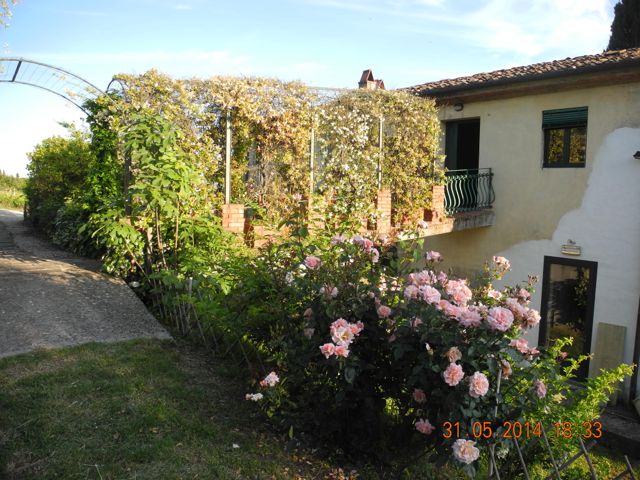
The Appartamento Laghetto, entered by a jasmine lined bridge.
Our first port of call on Monday was the remarkable walled town of Lucca with its
intact circuit of 16th. and 17th. century ramparts and bastions. Here
we had booked a visit to the Palazzo Pfanner with its small but
beautifully formed garden. We were greeted by the amiable Dario
Pfanner, formerly of All Souls, Oxford. His family were from Bavaria
and purchased the palazzo in the middle of the 19th. century and set it
up as a brewery with attached beer garden. This closed in 1929 but
Dario told us he now had plans to reopen it as an additional visitor
attraction, remember you read it here first. The gardens were indeed very pleasant with some fine 18th.
century statuary but the lovely and much photographed central fountain
which I had assumed was an integral part of the 17th. century garden
was actually added in the early 19th. century following the demolition
of a two storey casino. So an attractive but not hugely relevant
start to our expedition.
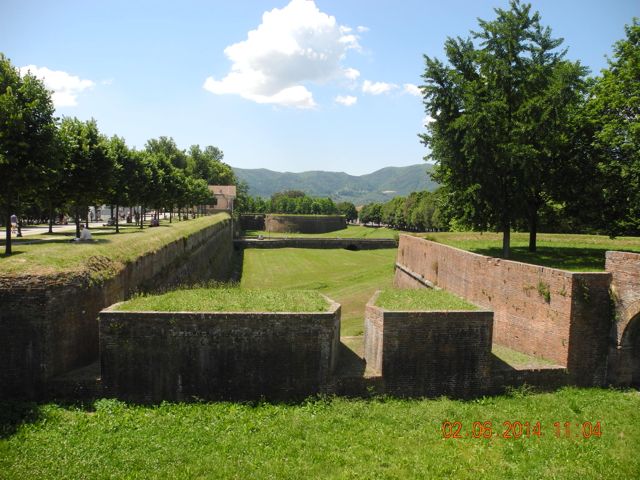
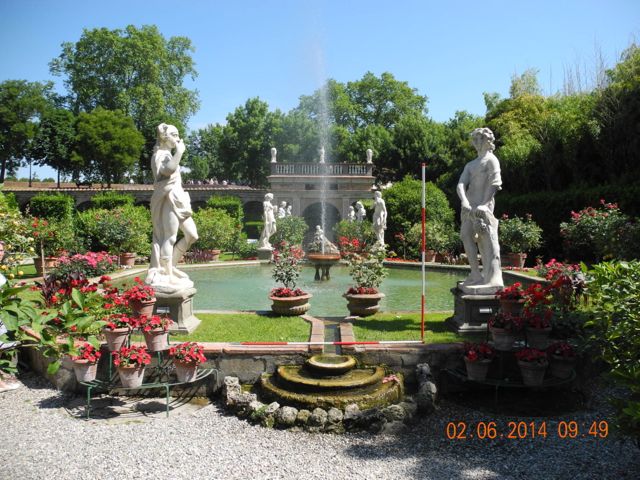
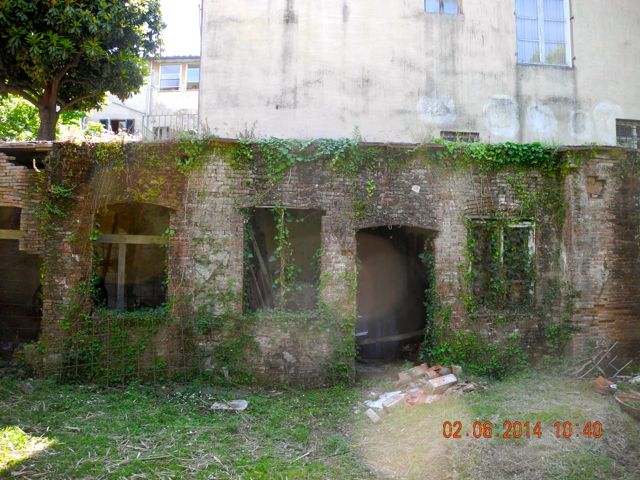
Baluardo S. Donato viewed from Baluardo S. Croce, looking south west. The central fountain, Palazzo Pfanner, view looking north. The former brewery, sorry, just had to put it in.



Baluardo S. Donato viewed from Baluardo S. Croce, looking south west. The central fountain, Palazzo Pfanner, view looking north. The former brewery, sorry, just had to put it in.
Our second outing was an
exploratory trip to Florence (Firenze) on the train, a small tip to
anyone contemplating an Italian rail journey: buy your ticket then
validate it on the platform side machine then check you've validated it
and if in doubt validate it again. We were very lucky on at least one
of our trips... I shall say no more less we are pursued by the Italian
rail authorities. We were trying to track down the Orti Oricellari, a
garden which in the early 16th. century was a meeting place for the
intellectuals of the time, an interesting possible parallel with the
Oxford gardens. We had an address to call at but whatever it was it had
been transformed into the Lycée Victor Hugo, école Francaise de
Florence. Understandably they were a little reluctant to just let us in
so we left our credentials and made an appointment to return the
following day. This we did and were graciously received by the Preside,
M. Jean Pierre Pinto. He took us down past washrooms and the laundry
and unlocked the door to the astonishingly well preserved grotto of
Polyphemus. After allowing us time to photograph and plan it we emerged
into the sunshine to explore the grounds. Unfortunately the gigante was
shrouded in scaffolding and being worked on by a friendly local
restorer. He let us in on the ground floor to photograph work in
progress. We haunted the nearby streets looking for other signs of the
gardens, long since divided up between multiple properties but with no
luck, still it was a great privilege to be allowed to see what we had.
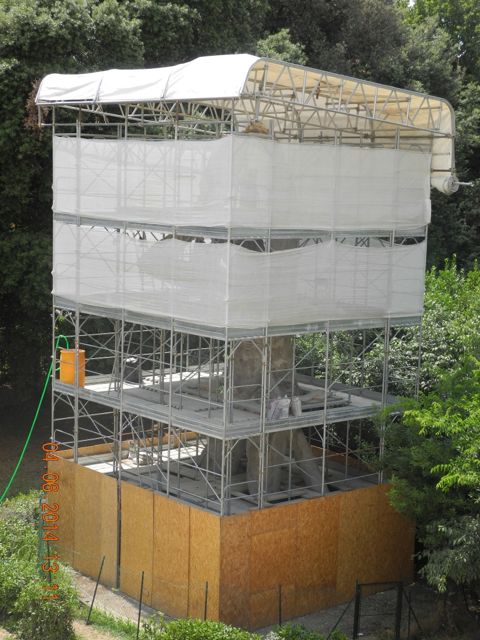
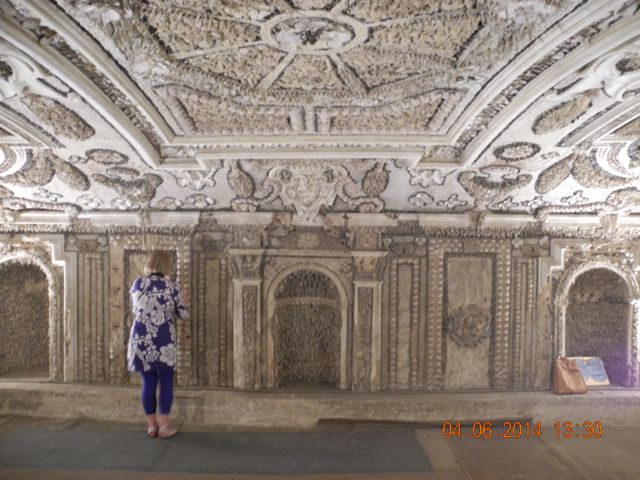
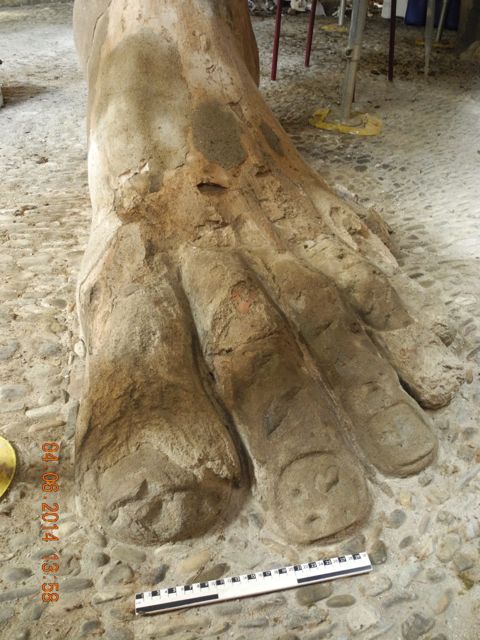
The view from the headmaster's window, a gift wrapped giant. Down in the grotto, Verna at work. Up close and personal, just a foot but what a foot!



The view from the headmaster's window, a gift wrapped giant. Down in the grotto, Verna at work. Up close and personal, just a foot but what a foot!
Whilst in Florence we also made a
visit to the Museum of the History of Science, now renamed the Museo
Galileo and tucked out of site round the back of the Uffizi. Apart from
such wonders as Galileo's first telescope there was little to detain
us. I was hoping for something on hydraulic engineering or science and
garden design but no. One interesting little artefact was an anamorph
of the kind described by Plot as being in Sir Anthony's possession.
Just up the road is the Museo nazionale del Bargello and we
called in here to examine some examples of garden sculpture which
had been bought in from the cold better to preserve them. Most engaging
were a series of bronze birds by Giambologna rescued from the Villa
Medicea di Castello.
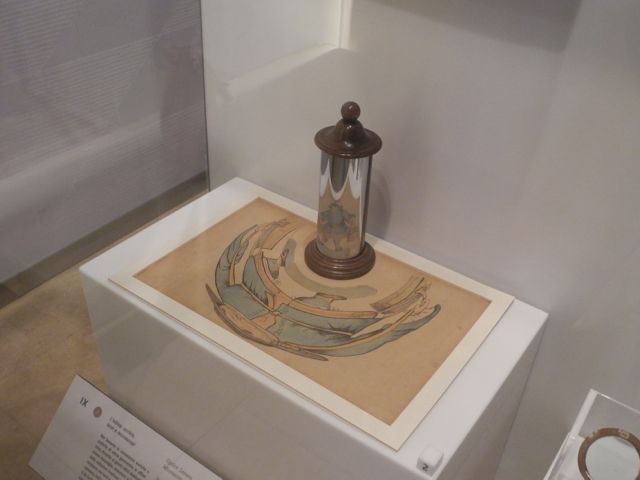 .
.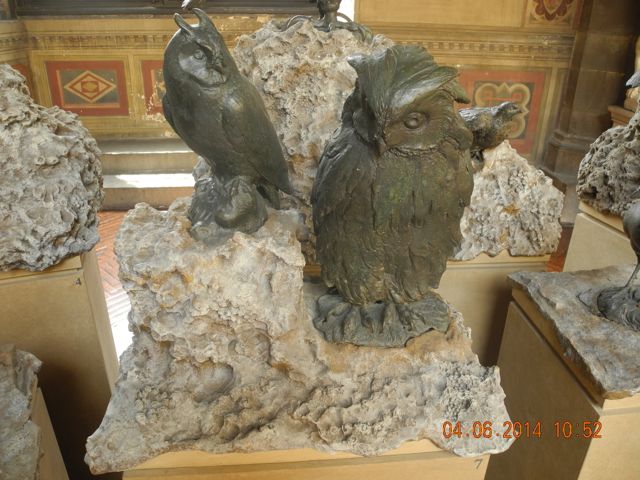
Anamorph in the Museo Galileo. Two of Giambologna's owls in the Bargello
It took a few days to get over the
Tuscany trip and put the house and garden in order but there was lots
top do on site as well, mainly clearing the weeds after three or four
weeks of neglect. As it happened we had two evening social events and
tours at Hanwell, one for the friends of the Oxford Botanic Gardens and
the other for our good friends from the Enstone Historical Society.
Many many thanks therefore to Peter and Mike who helped with weeding.
Initially we decided to prepare the island for further investigations
later this summer and that involved both removing vegetation and
bailing out several months worth of semi-stagnant water from Sir
Anthony's Bath then we cleared and swept the two areas down around the
second sluice and cut back some vigorous brambles from around the
Cascade. Unfortunately I forgot to take any before and after photos but
see below.
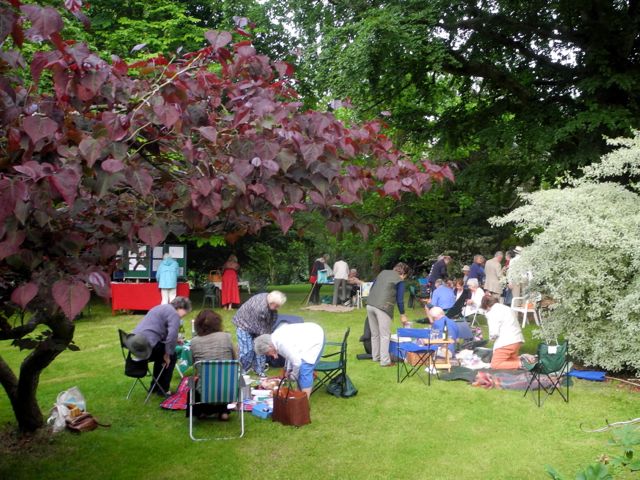
The Enstone Historical Society enjoy their picnic after touring the grounds.
The situation at Enstone was even more dire when we eventually arrived there and again special thanks to Robin for helping tame the wilderness. The grassy lawns of early spring have now grown up to almost head height. I used the Jimny to blaze a trail, or a least somewhere to walk, down to the the site of the lower excavation and it was an extraordinary experience, I really couldn't see where I was going. On the terrace dig a remarkable carpet of small pink flowered Convolvulus arvensis (field bindweed) had established itself, needless to say it was mercilessly extinguished.
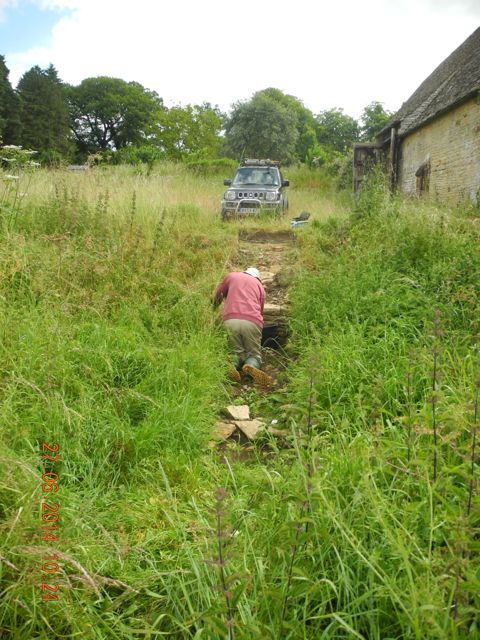
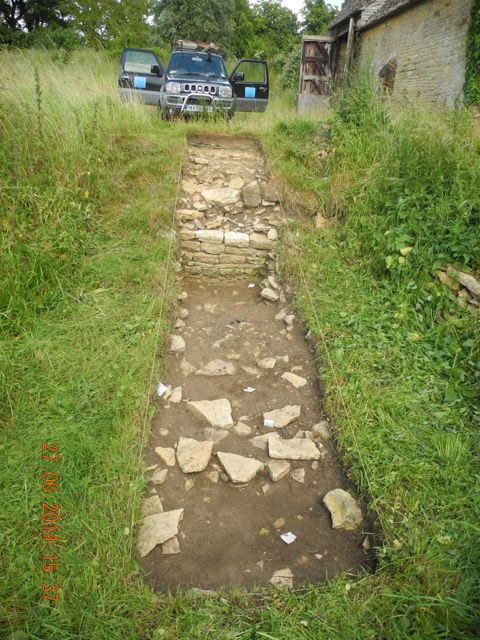
The fruit of Robin's labours.
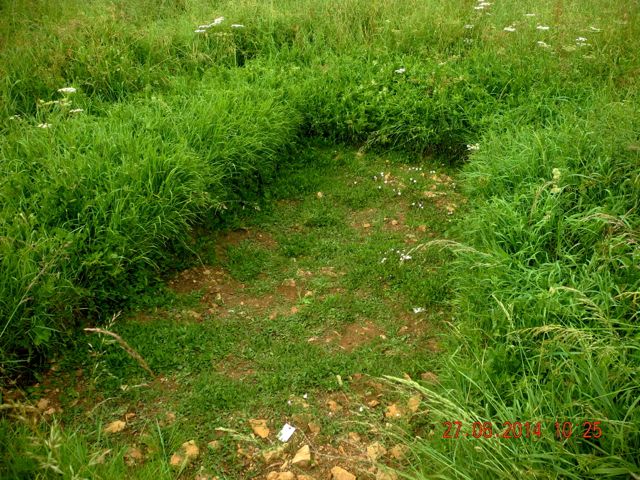
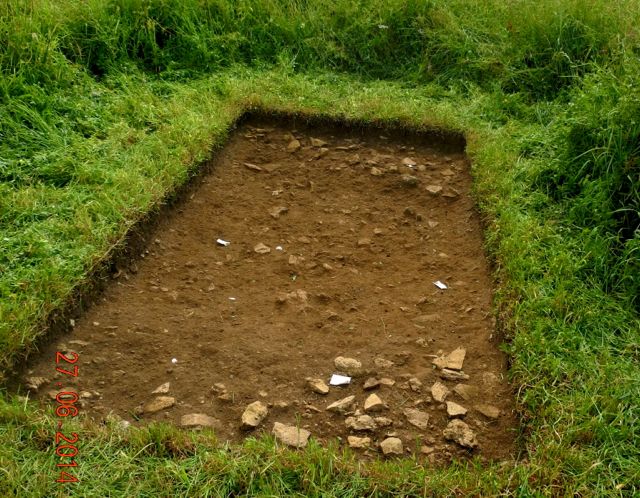
My bit, before and after.
Back at Hanwell our thoughts began to turn towards preparing for the big dig in August and in particular the huge section through the East Terrace. The ground had to be cleared and the trench laid out which meant advancing into the undergrowth with machete in hand (Thanks to Christopher for the judicious application of a little weed killer which went some way to opening things up for us). before putting sweating hordes to work on the trench we needed to have some sort of idea what to expect so we began a couple of test areas in order to get a sneak preview
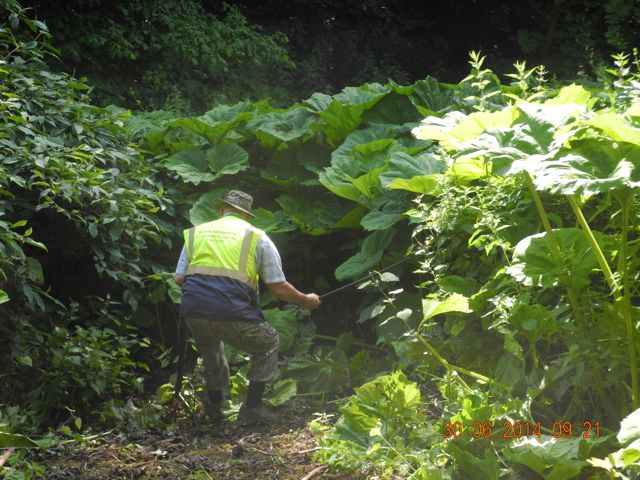
Peter takes on the Butterbur (Petasides hybridus).
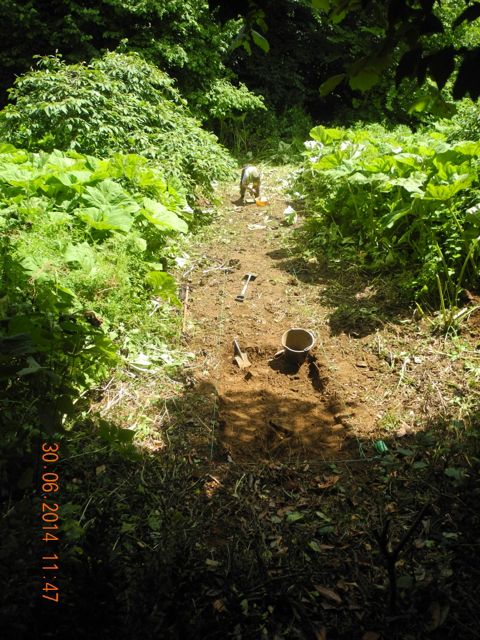
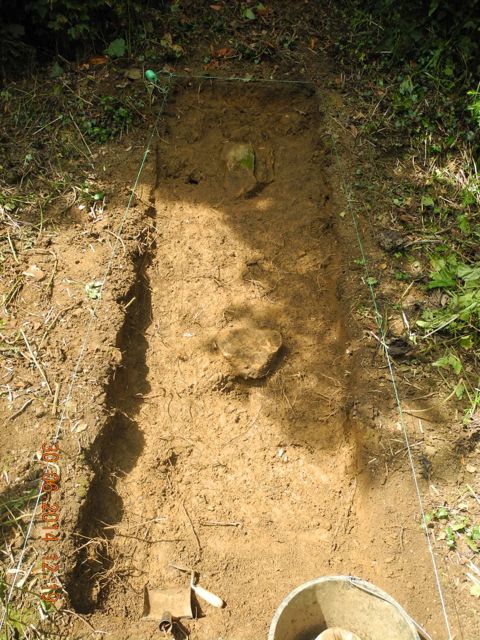
Work begins on two test areas on the East Terrace: looking downhill to the east and uphill to the west.... nothing yet.
 .
.
Anamorph in the Museo Galileo. Two of Giambologna's owls in the Bargello
By the way, here's a small tip,
don't try and enter the Bargello with an archaeology trowel, all bags
are scanned by X-ray machine and they take it amiss if you try and
smuggle in, however unwittingly, sharp objects. Of course Florence
being the kind of city it is there's something of interest on every
corner, quite literally, and the kind of technology employed in their
gardens was also used to bring water to thirsty Florentines or today...
tourists.
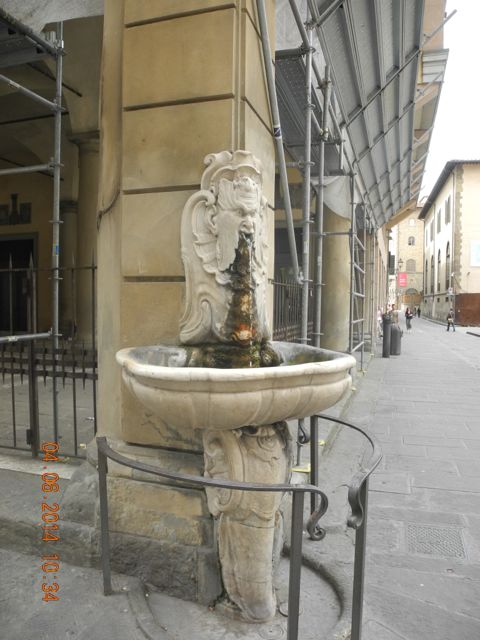
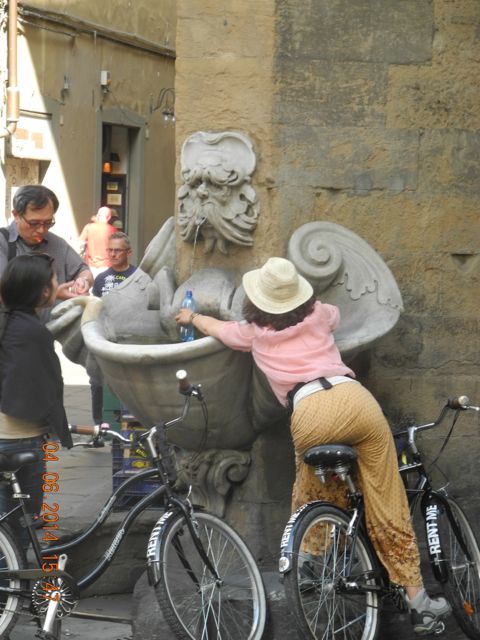
Florentine fountains: on the corner of Via de Castellani and Borgo de Greci; on the corner of Via Maggio and Via della Sprone.


Florentine fountains: on the corner of Via de Castellani and Borgo de Greci; on the corner of Via Maggio and Via della Sprone.
Thursday June 5th. was the day of
four villas, it could have been five but more of that later. In the
hills to the north of Lucca are a whole series of country villas many
built in the 15th. and 16th. centuries by rich and powerful Lucchesian
families often on the site of medieval estates or farmsteads. There is
a similar situation north of Florence. We emailed five villas with
garden features of particular significance but nothing terribly helpful
came back so we had to play the tourist and turn up, pay our entry fee
and do what we could. As it happened there were so few people
around that we pretty well had the gardens to ourselves and were
able to plan a couple of grottoes and use our photo scales freely.
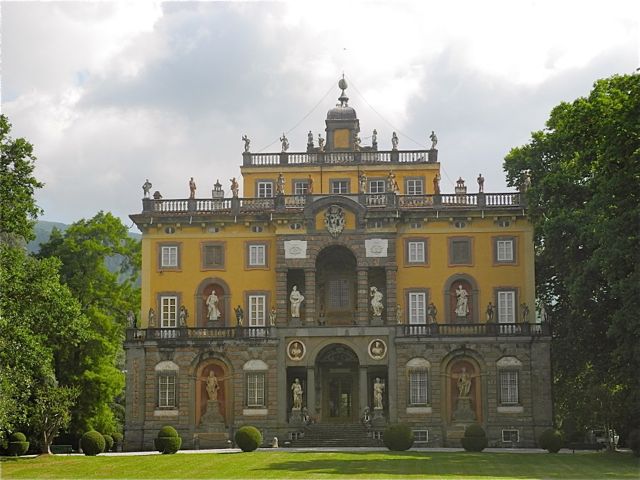
Villa Torrigiani from the south, Tuscan rain clouds threaten.
First on our list was the Villa Torrigiani Di Camigliano which retains from the 17th. century the Nymphaeum of the Winds, a superb stairway which houses a hidden grotto and the two are separated by the Garden of Flora above which is a reservoir that provided the supplies for waterworks of such subtlety that they inspired the poet Filandro Cretense to wax lyrical in praise of the engineering. Interestingly the author Mariachiara Pozzana whose book 'Gardens of Florence and Tuscany: A Complete Guide' was our expedition Bible, missed the under stair marvels, perhaps they were not open when she visited or maybe it was the bats. A few minutes into the survey and I became aware of the odd flitting about and looked up to see a small colony of bats hanging just above my head. Once you got used to them it was really quite amazing to watch the way the dodged about. I guess if we had been in England we just wouldn't have been allowed access.
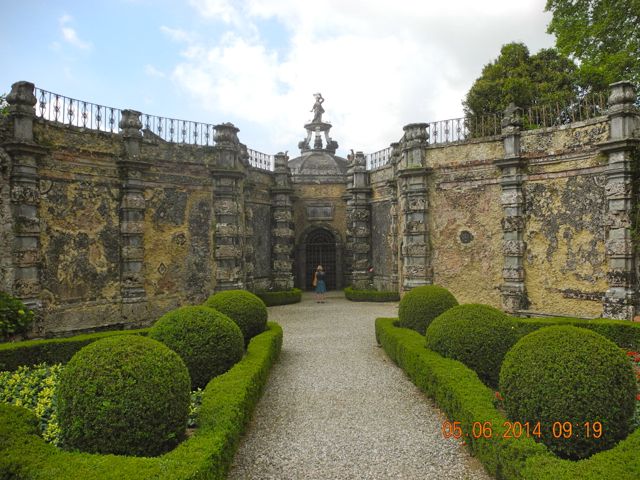
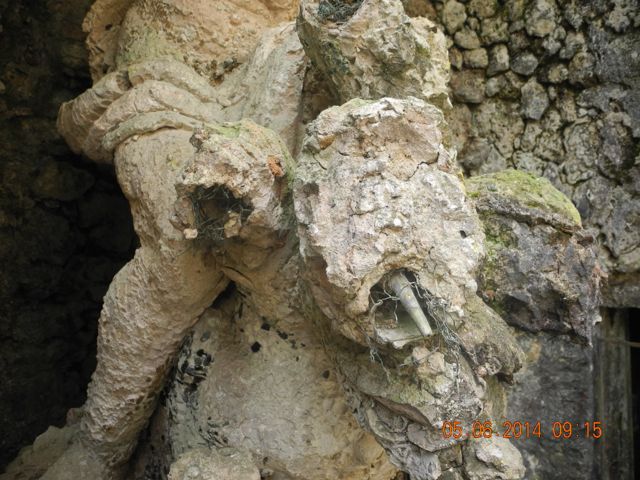
Entry to the Nymphaeum of the winds looking south and a close up of the pipework and bronze wire mesh inside the decaying head of a hydra.
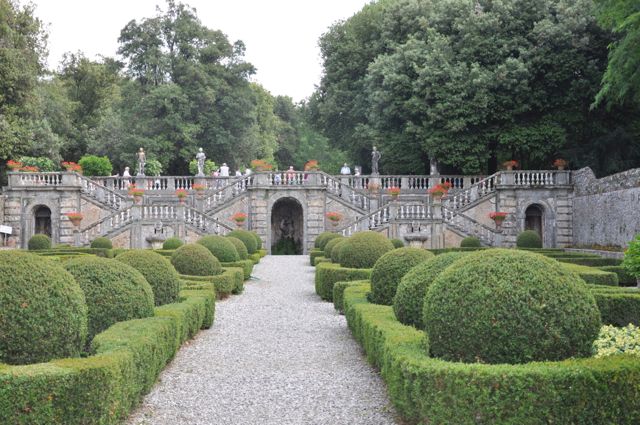
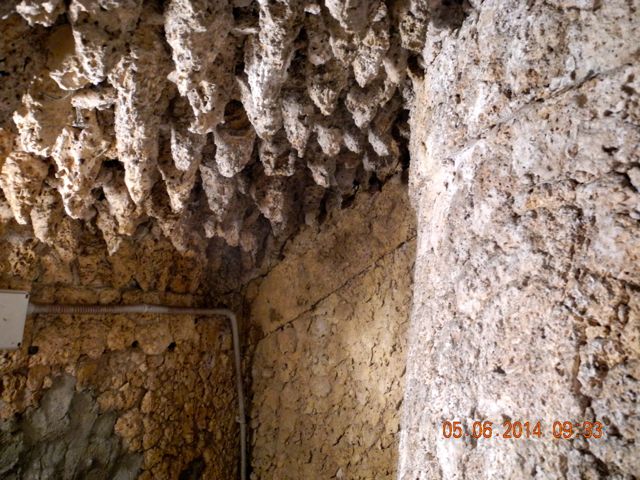
The stair at the north end of the Garden of Flora, amongst the secrets it conceals... bats.

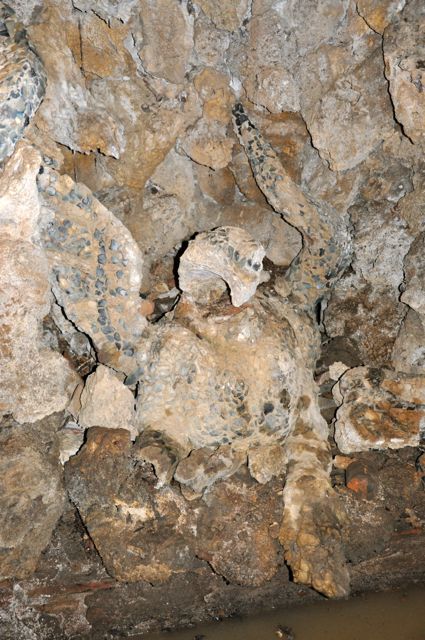
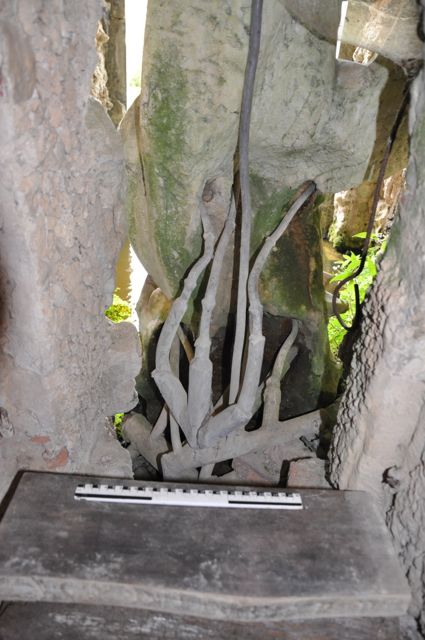
The grotto behind the stairs: the narrow passageway, the remains of a sphinx and some marvelously intricate pipework, just the kind of thing I needed to see.
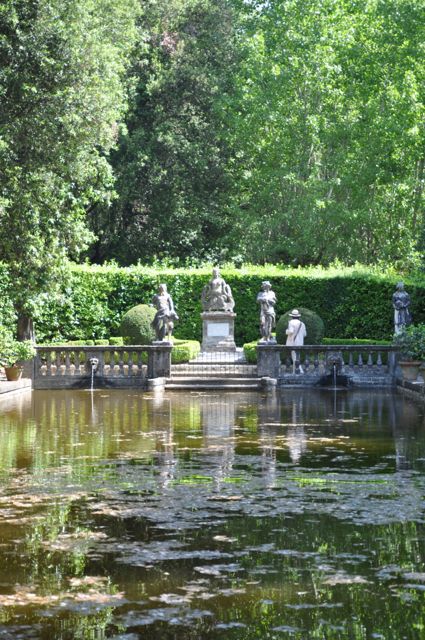
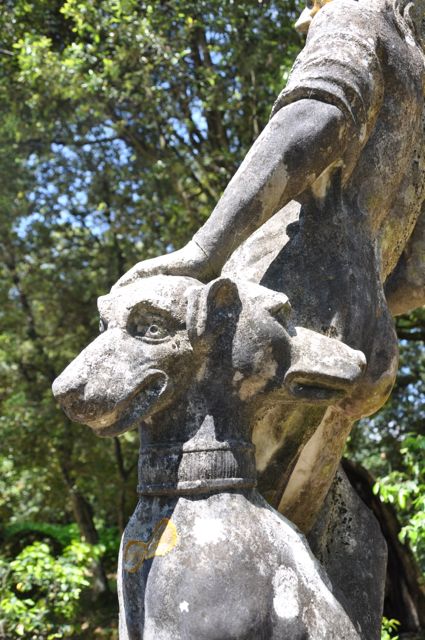
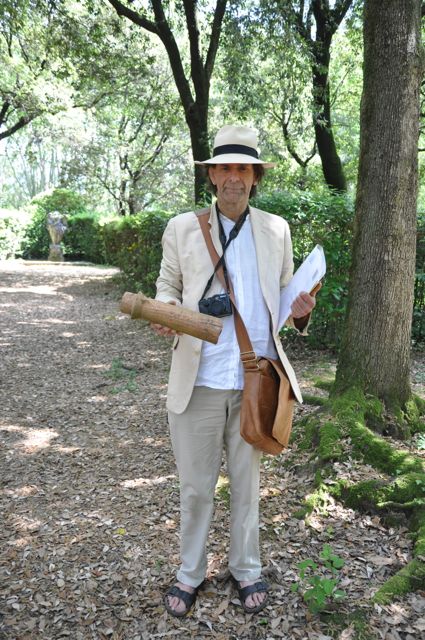
The reservoir north of the steps. Cerebus, Hades' three headed dog. Holding a length of Tuscan terracotta drain pipe... exciting eh?
The people at our next intended port of call, the Villa Mansi had been kind enough to at least email us their opening hours and charges but when we got there it all looked very closed and in Italy when something looks closed it really looks closed. We motored up and down the road and saw great iron gates chained and padlocked and that was about it so it was on to garden number three the Villa Reale, Marlia.
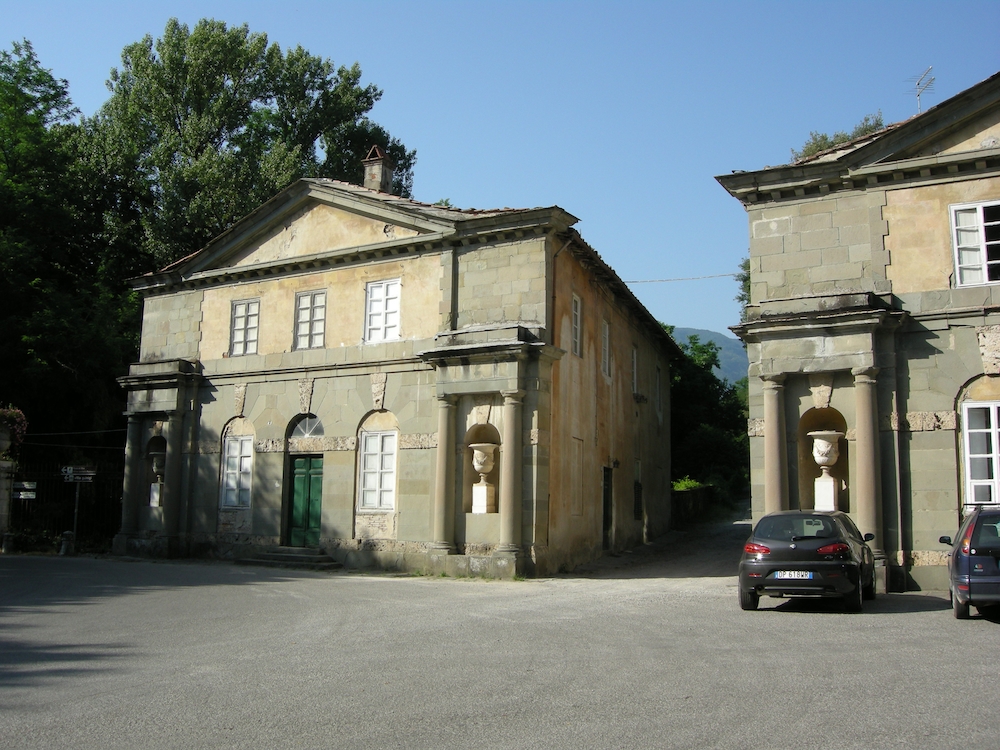
The gatehouses, inquire at the one on the right.
Admission here was an interesting experience. The road bends round through the forecourt to the villa which is flanked by a pair of gatekeeper's houses which still perform that function so you ring on the door bell and wait, the custodian will probably have spotted your arrival and will be peering out from behind her curtains, then you are ushered in the front room, sold your tickets and sent out again to wait while a hidden button is pressed somewhere and the main gates silently swing open. You're having fun and you haven't even got in yet.
There are several key elements to the garden but we were particularly interested in the Grotto of Pan, the Fishpond and Nymphaeum and the Theatre of Water. The place was deserted as we strolled through some very English looking parkland towards the16th. century Grotto of Pan (Pozzana refers to it as the Nymphaeum). This is fronted by a loggia surmounted by a summer house approached by steps on the west side. The grotto itself is octagonal with a wonderful natural lighting effect thanks to an oculus in the dome.
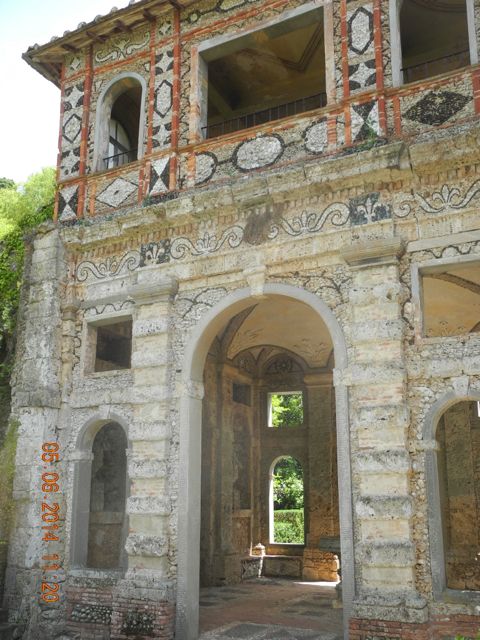
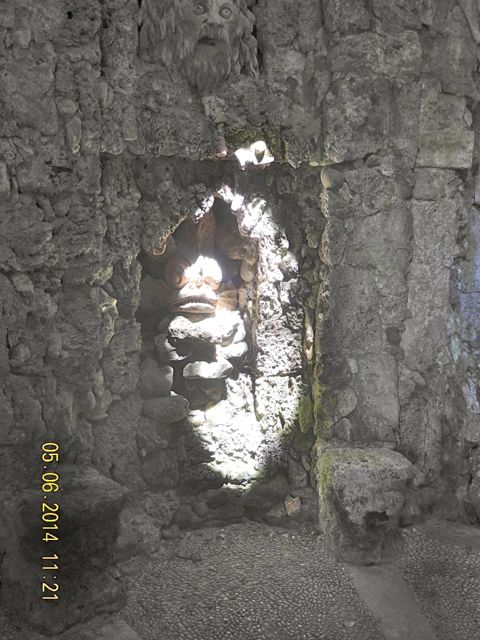
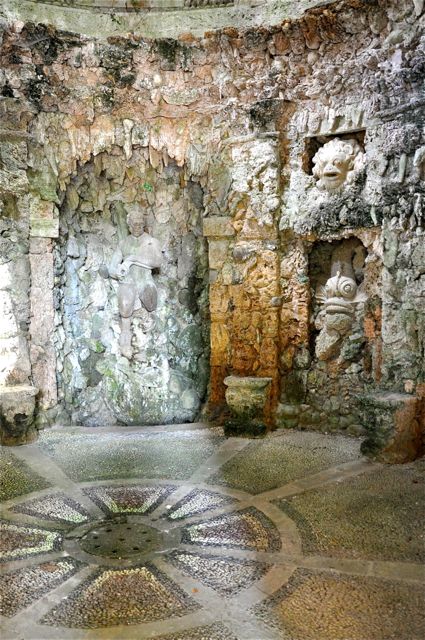
The Grotto of Pan from the west. Lighting up a dolphin's head. Inside the grotto.
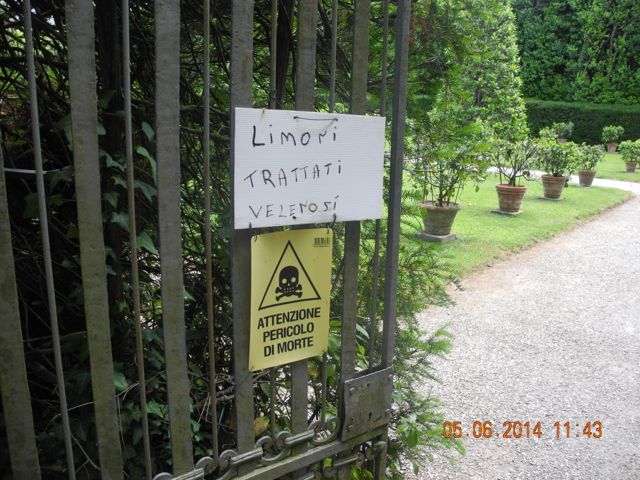
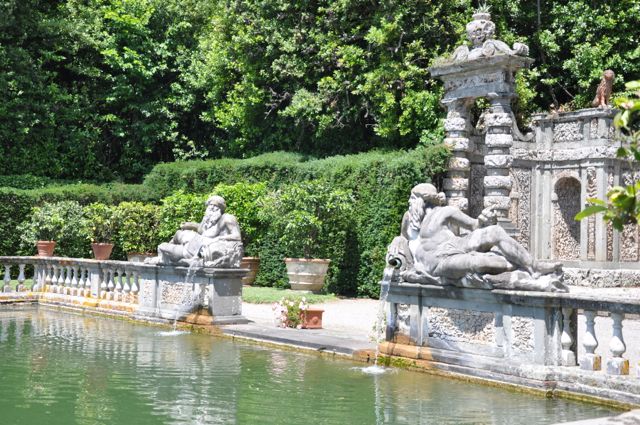
Who would have thought entering a garden could be so dangerous? Two river gods replenish the fishpond, behind them Leda is engaged with a swan.
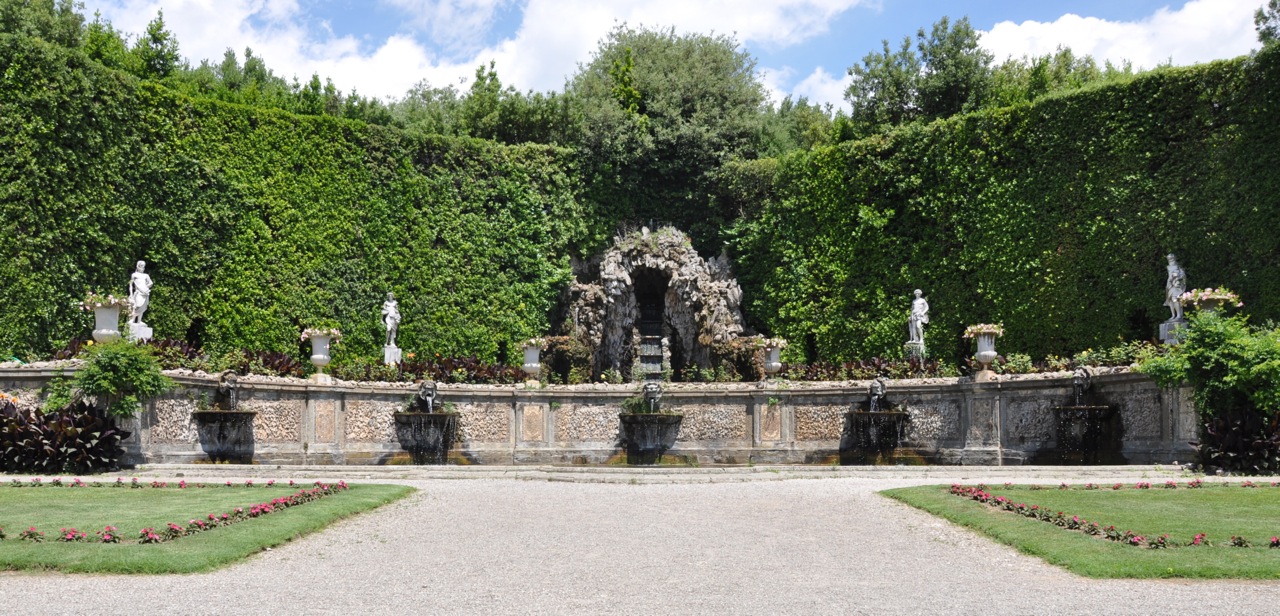
The Water Theatre ( Teatro d'Acqua) view from the south.
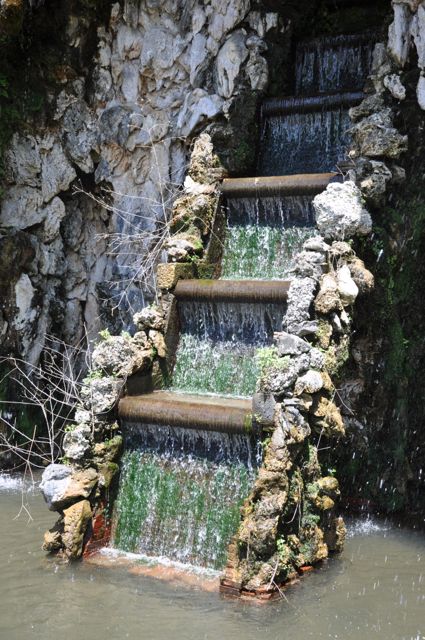
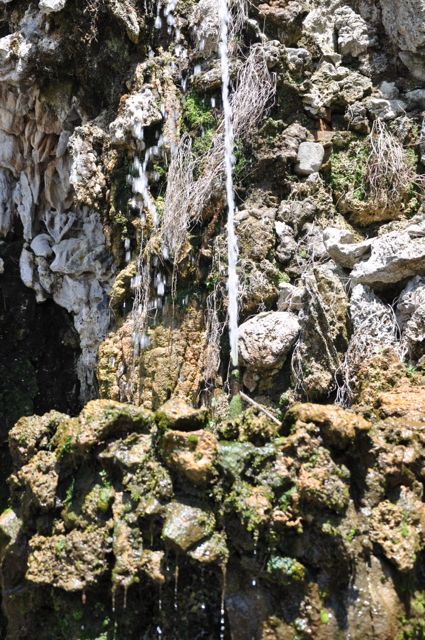
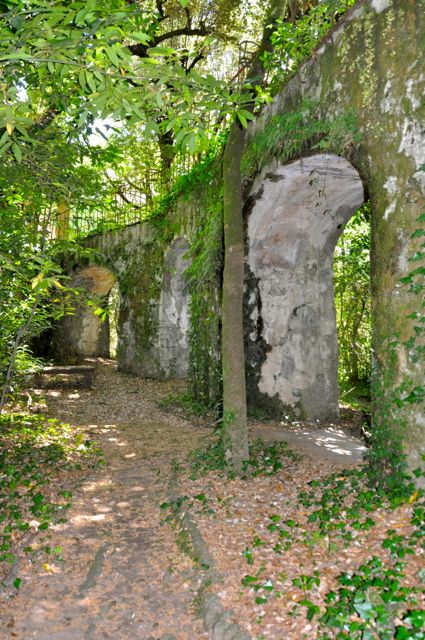
The Water Theatre: the cascade, one of several fountains and the source of it all, an aqueduct hidden in the woods behind the great facade.
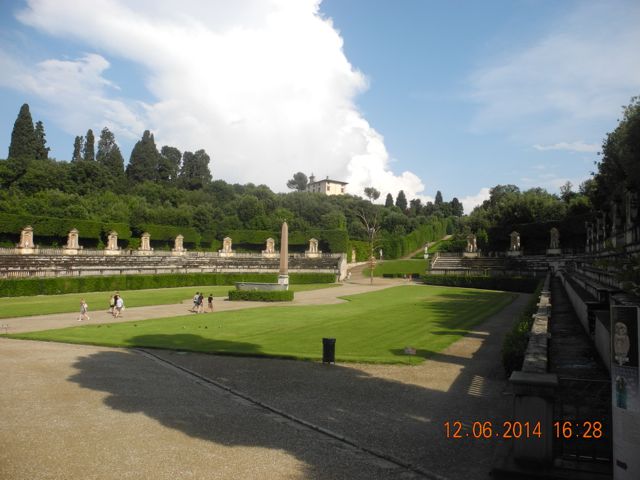
The amphitheatre is the first striking feature that appears as you emerge up from the ramp from the palace courtyard, a feature which links in with a long tradition of theatrical spaces in gardens that we examined during the work on Farnborough. As the main grotto was only opened for a few minutes on the hour we took a turn to the left and headed down to Buontalenti's Great Grotto taking in the rather grotesque statue of the dwarf Morgante riding on a turtle, what is it with turtles?
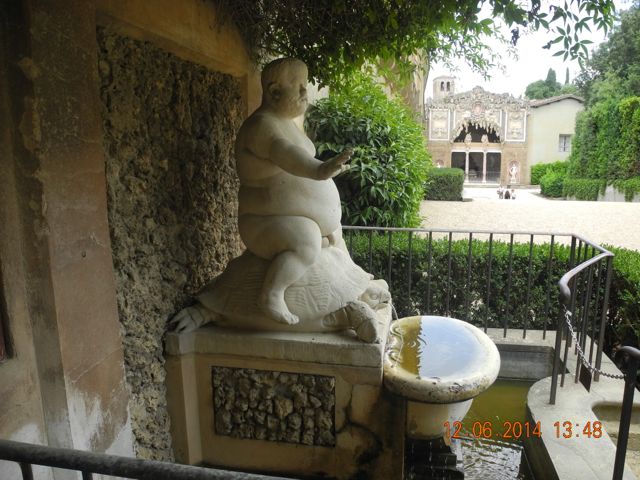
Known locally as Bacchus this is in fact a likeness of the favourite dwarf of Cosimo I, view from south west, the Grand Grotto is in the background..
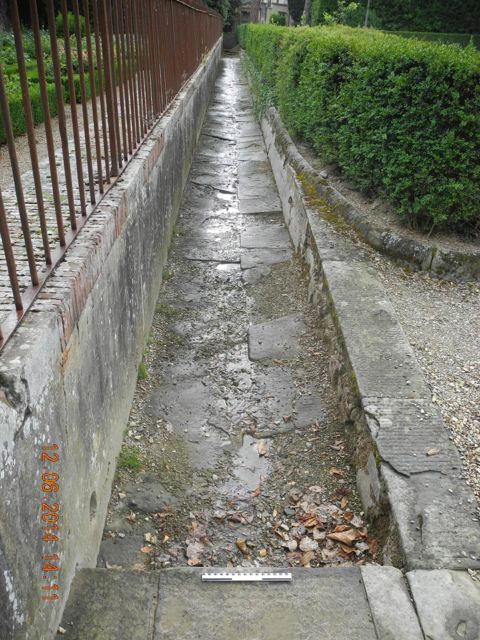
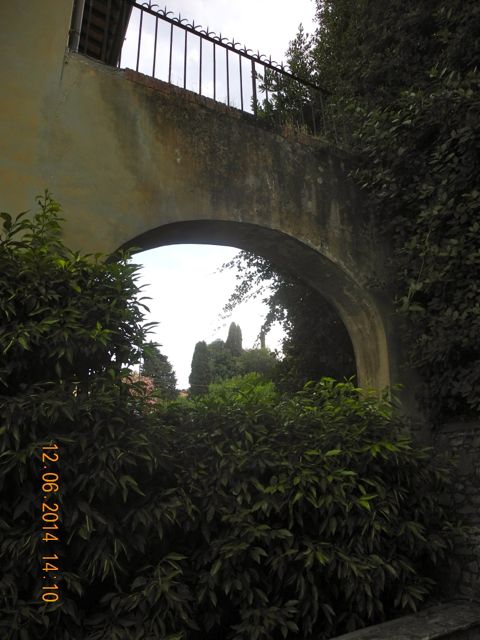
An open stone lined channel approaching the Grand Grotto from the south east then carried into it on a small aqueduct, view from the south west.
The gardens at the Villa Garzoni would perhaps more than any other of the sites we visited repay additional study as there seems a good chance that the early arrangements for delivering and managing the water supply remain substantially intact, however, it was our last day so we saw what we could then packed up.
It is a fact not without irony that to visit some of the most attractive places in Italy you have to travel through some of the most unattractive... and busiest. The Arno valley between Florence and Lucca has to be one of the most heavily developed regions in the country. Just as earlier populations were attracted by the area's resources today the potent combination of tourism and market gardening has created an odd kind of urban sprawl taking in the towns of Prato and Pistoia. This transformation of the surrounding countryside makes it quite difficult in some cases to read the gardens as they would have stood in their original settings. Indeed it is with a feeling of some gratitude and relief that we were able to insist that 'no we're really only here for the plumbing'. The thought of having to get to grips with all that symbolism of hidden meanings and esoteric knowledge just gives me a headache. What we have come away with is an extraordinary archive of detailed photographs of the fine details of how these extraordinary places were put together. Our confident expectation is that knowing at least something about the nuts and bolts of Renaissance plumbing will help us with kind of fragmentary evidence we are likely to be unearthing at Enstone and Hanwell.
And finally... a very special thank you to Edwina, Nigel and Verna, who shared driving, photographing, surveying, shopping, cooking and other duties to make the expedition such a success.
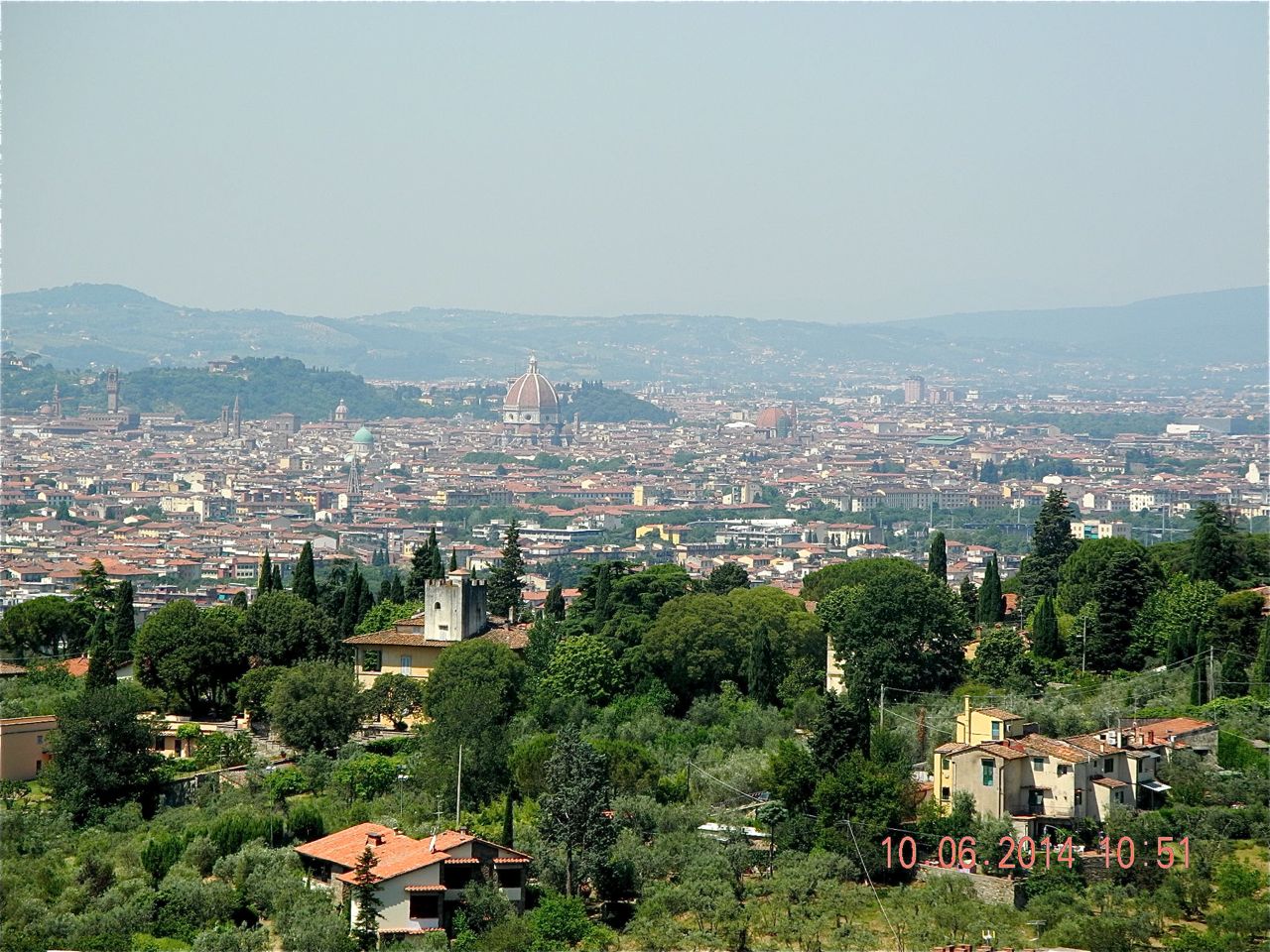
View across the Arno valley towards Florence, looking south west from the Villa Gamberaia.

Villa Torrigiani from the south, Tuscan rain clouds threaten.
First on our list was the Villa Torrigiani Di Camigliano which retains from the 17th. century the Nymphaeum of the Winds, a superb stairway which houses a hidden grotto and the two are separated by the Garden of Flora above which is a reservoir that provided the supplies for waterworks of such subtlety that they inspired the poet Filandro Cretense to wax lyrical in praise of the engineering. Interestingly the author Mariachiara Pozzana whose book 'Gardens of Florence and Tuscany: A Complete Guide' was our expedition Bible, missed the under stair marvels, perhaps they were not open when she visited or maybe it was the bats. A few minutes into the survey and I became aware of the odd flitting about and looked up to see a small colony of bats hanging just above my head. Once you got used to them it was really quite amazing to watch the way the dodged about. I guess if we had been in England we just wouldn't have been allowed access.


Entry to the Nymphaeum of the winds looking south and a close up of the pipework and bronze wire mesh inside the decaying head of a hydra.


The stair at the north end of the Garden of Flora, amongst the secrets it conceals... bats.



The grotto behind the stairs: the narrow passageway, the remains of a sphinx and some marvelously intricate pipework, just the kind of thing I needed to see.



The reservoir north of the steps. Cerebus, Hades' three headed dog. Holding a length of Tuscan terracotta drain pipe... exciting eh?
The people at our next intended port of call, the Villa Mansi had been kind enough to at least email us their opening hours and charges but when we got there it all looked very closed and in Italy when something looks closed it really looks closed. We motored up and down the road and saw great iron gates chained and padlocked and that was about it so it was on to garden number three the Villa Reale, Marlia.

The gatehouses, inquire at the one on the right.
Admission here was an interesting experience. The road bends round through the forecourt to the villa which is flanked by a pair of gatekeeper's houses which still perform that function so you ring on the door bell and wait, the custodian will probably have spotted your arrival and will be peering out from behind her curtains, then you are ushered in the front room, sold your tickets and sent out again to wait while a hidden button is pressed somewhere and the main gates silently swing open. You're having fun and you haven't even got in yet.
There are several key elements to the garden but we were particularly interested in the Grotto of Pan, the Fishpond and Nymphaeum and the Theatre of Water. The place was deserted as we strolled through some very English looking parkland towards the16th. century Grotto of Pan (Pozzana refers to it as the Nymphaeum). This is fronted by a loggia surmounted by a summer house approached by steps on the west side. The grotto itself is octagonal with a wonderful natural lighting effect thanks to an oculus in the dome.



The Grotto of Pan from the west. Lighting up a dolphin's head. Inside the grotto.


Who would have thought entering a garden could be so dangerous? Two river gods replenish the fishpond, behind them Leda is engaged with a swan.

The Water Theatre ( Teatro d'Acqua) view from the south.



The Water Theatre: the cascade, one of several fountains and the source of it all, an aqueduct hidden in the woods behind the great facade.
Three down, more or less, two to go after lunch. next up was the Villa Grabau,
a comparatively small establishment but I was keen to see a
rather grotesque sculpture in the garden and kind of basilisk riding on
top of a turtle. Water didn't feature enormously in the garden but
there were some characterful satyr's masks spouting.
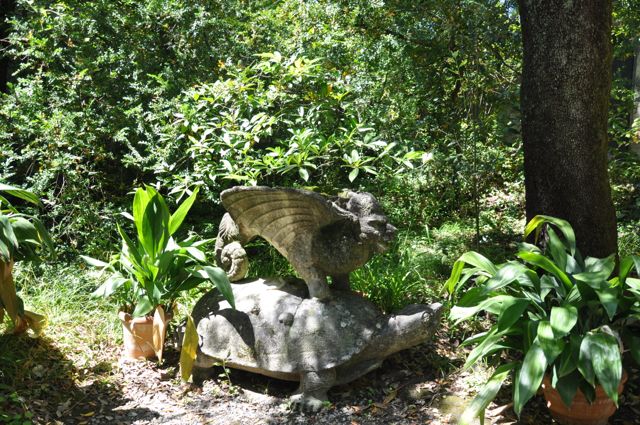
The turtle-riding basilisk thing.
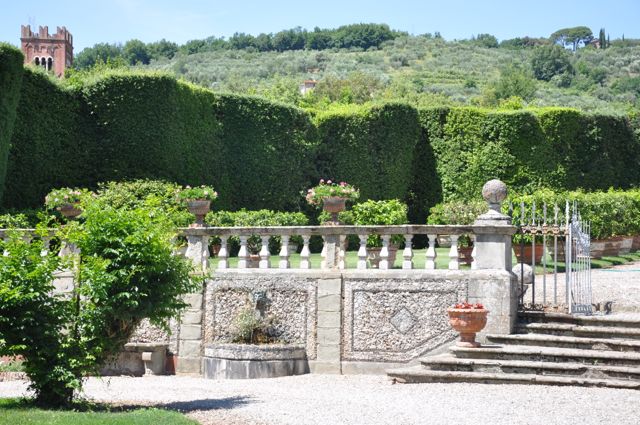
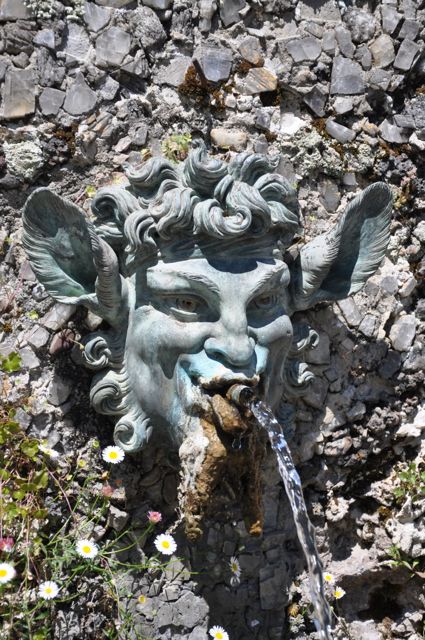
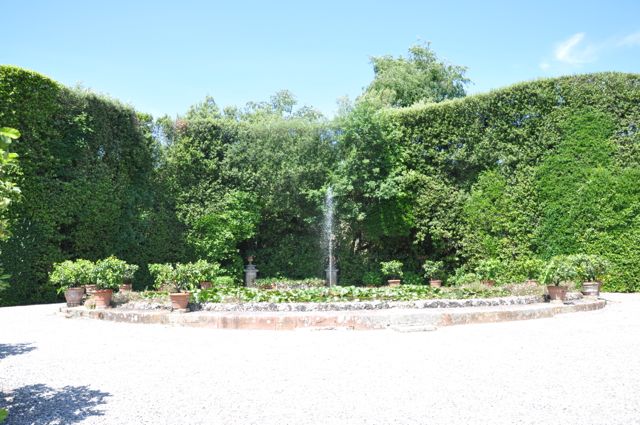
The terrace behind the villa looking north with four superb satyr masks attributed to Pietro Tacca and a fountain beyond.

The turtle-riding basilisk thing.



The terrace behind the villa looking north with four superb satyr masks attributed to Pietro Tacca and a fountain beyond.
Finally and with more features per square metre than any other of the day's visits was the Villa Buonvisi Oliva.
Once again there was a bell to ring and after a time the gardener
appears escorted by a huge shaggy Alsatian like dog to let us in. We
are then taken down to the magnificent double height 'Loggia del
Civitali' on the north side of the villa where tickets and pamphlets
are produced from a carrier bag. The first exciting feature
which I imagine most people would ignore was tucked away in the north
east corner of the garden. This was a large and alarming deep cistern
that clearly supplied the assorted water works and other facilities
scattered round the place. The first of these to the north of the house
was yet another grotto, you can see by now we are becoming a little
blasé about it all, usual stuff fountains plus nymphs. Especially
intriguing were the stables with an extensive selection of Renaissance
and later period bronze taps. Running in a line southward from the
reservoir were a couple of wall mounted fountains the first being the
rather alarming Fountain of the Siren with evil looking leering
faces. More appealing was the next element in the chain, the
Fountain of Abundance. The water supply clearly takes a bend to
the west here feeding a small fountain in the middle of the lawn
before disgorging into the cascade that fills the Pool of the Cupids.
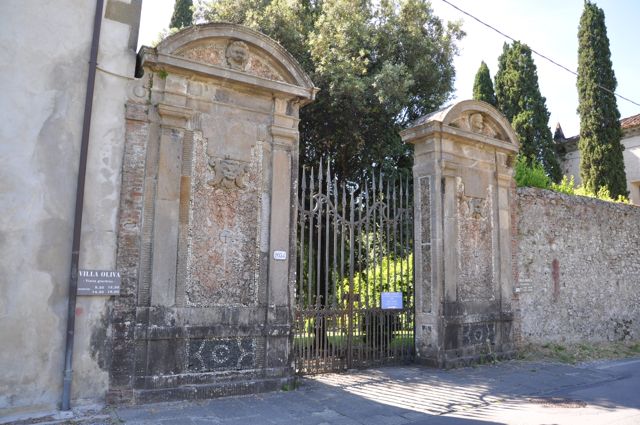
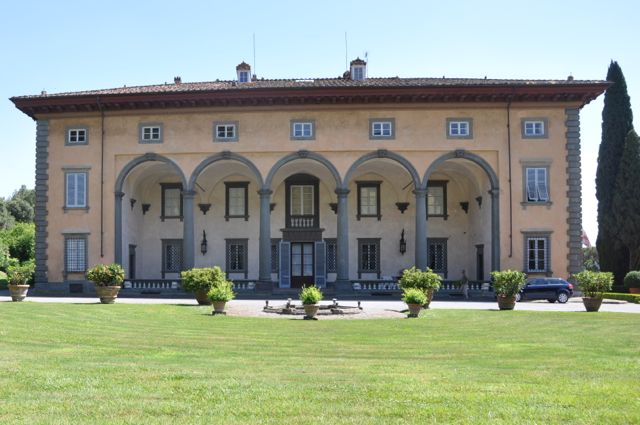
The entrance gates,'Per visite Suonare il campanella'. The grand loggia by Matteo Civitali, get your tickets here.
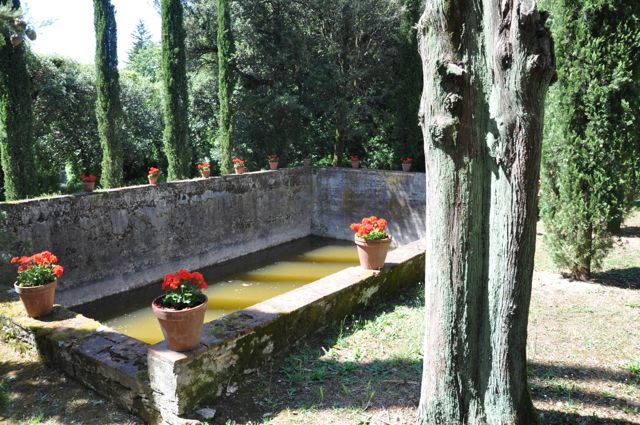
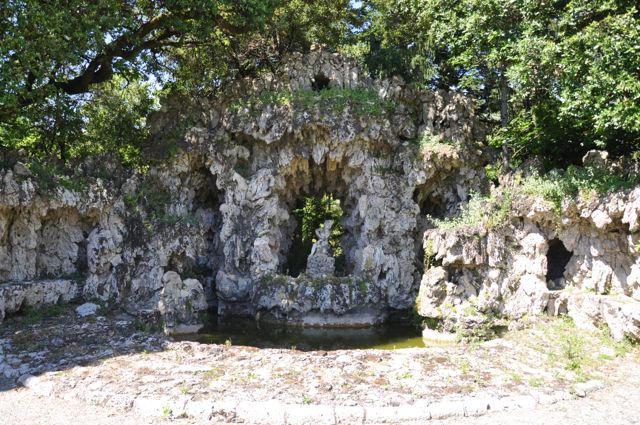
The cistern, view looking north west. Another nymphaeum.
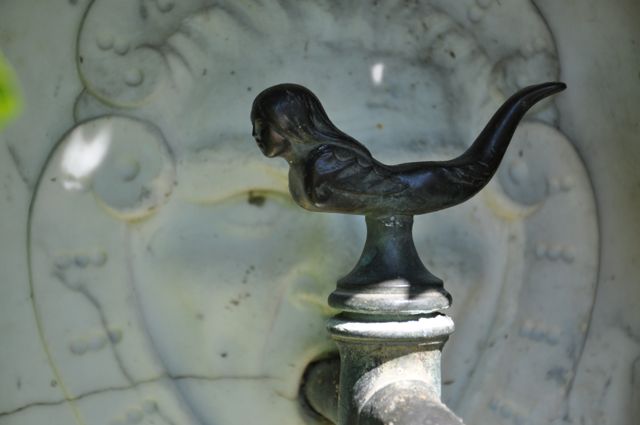
In the stable yard this charming little mermaid tap.
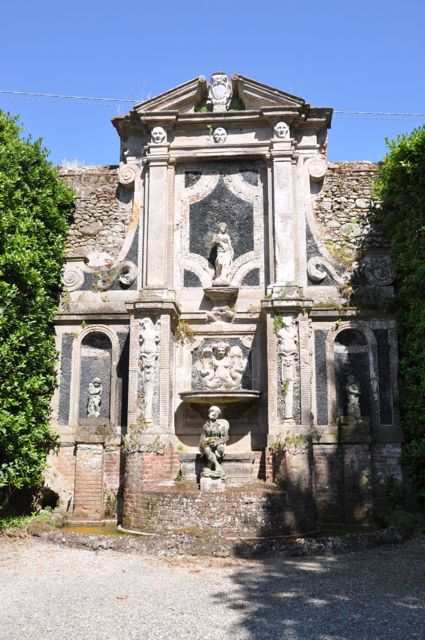
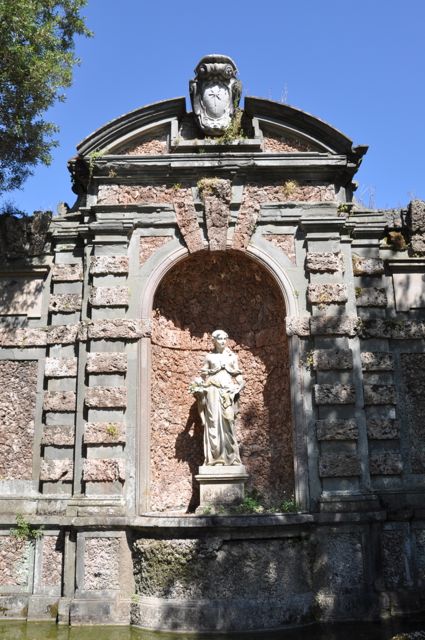
The Fountain of the Siren and the Fountain of Abundance, both viewed from the west.
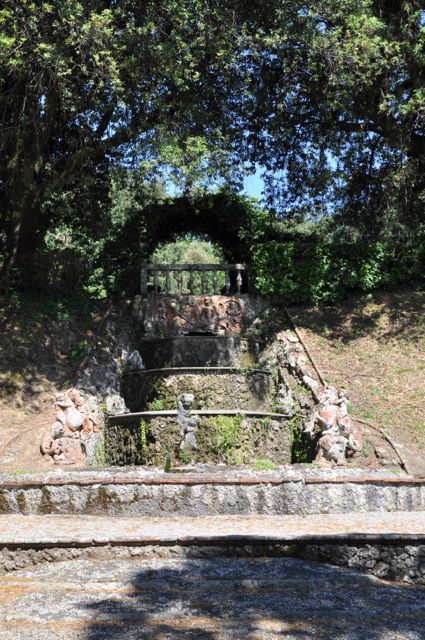
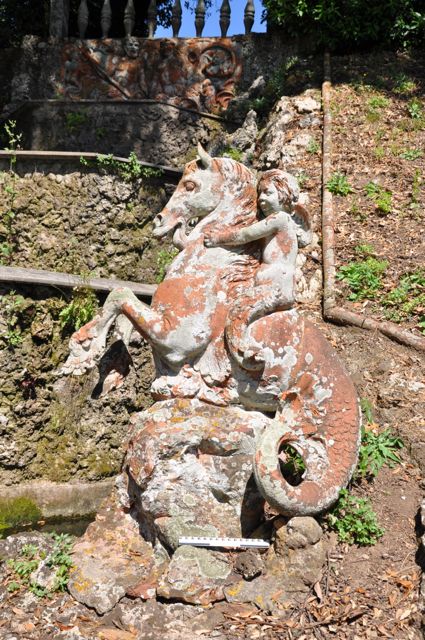
The cascade and the Vasca degli Amorini with an amorino riding a cavalluccio marino, view from the west.
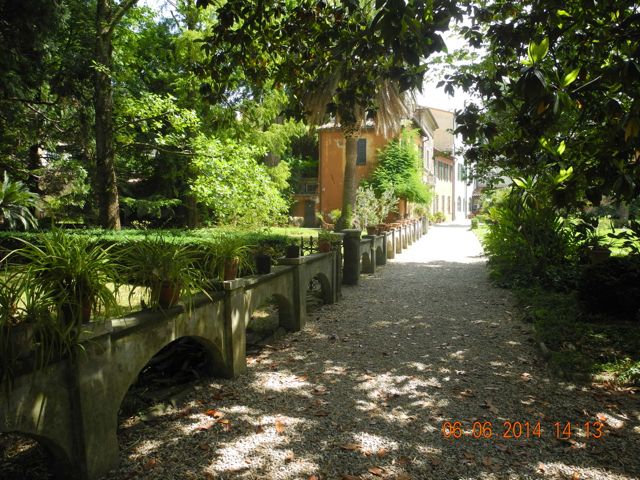
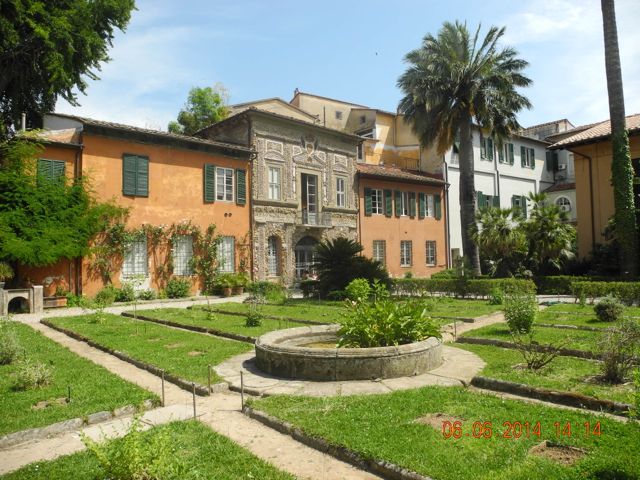
The alleyway leading down to the gallery. Beds, pool and gallery from the north west.
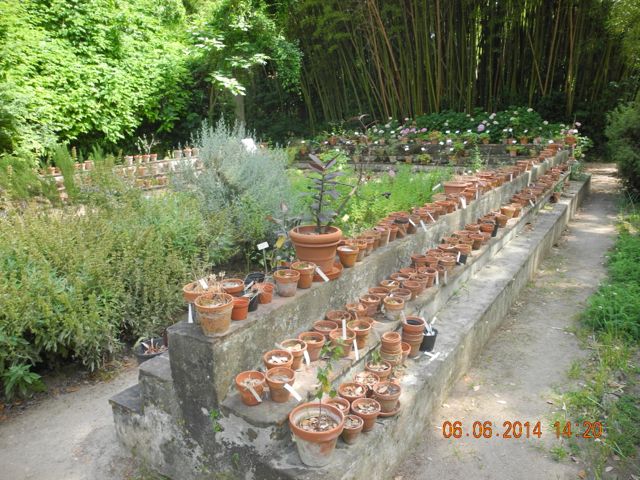
The Garden of the Myrtles, designed originally to display medicinal herbs, now displaying... flowerpots.


The entrance gates,'Per visite Suonare il campanella'. The grand loggia by Matteo Civitali, get your tickets here.


The cistern, view looking north west. Another nymphaeum.

In the stable yard this charming little mermaid tap.


The Fountain of the Siren and the Fountain of Abundance, both viewed from the west.


The cascade and the Vasca degli Amorini with an amorino riding a cavalluccio marino, view from the west.
It was a real pleasure pottering
round the peaceful countryside north east of Lucca with scarcely
another visitor in sight, a welcome break from the hustle and bustle of
Florence. However the next day, Friday June 6th. it was back to
battling the crowds in Pisa. We'll spare you the obligatory photograph
of pretending to hold up the leaning tower and mention instead the Orto Botanico di Pisa
claimed to be the world's oldest. Founded in 1544 they were relocated
to their current spot in 1591 and are right in the centre of the city.
The old part is laid out in a systematic fashion with rectangular beds
and small circular pools regularly spaced. The facade of the botany gallery was encrusted in piera spunga and shells in 1752.
Sad to say the gardens are not especially well maintained but there is
lots of demolition and building work underway, pity they couldn't spend
more on the gardeners.


The alleyway leading down to the gallery. Beds, pool and gallery from the north west.

The Garden of the Myrtles, designed originally to display medicinal herbs, now displaying... flowerpots.
Sunday June 8th. was a day of rest
which was just as well as the temperatures suddenly soared into the
high 30s! On Monday we were schedules to turn up at Pratolino
to visit the famous gardens there so we were a little concerned about
high temperatures, baking sun and so on. As it happened we should have
been more concerned about the Satnav which took us up some lonely and
very stony single track farm drives and abandoned us! Eventually we
arrived at the Parc Demidorff at Pratolino and were greeted by Matteo
Vannelli and Paolo
Porri who were to be our guides around the wonders of what had been the
greatest garden of the Italian Renaissance, at least in terms of
wonders and marvels. They were a little disconcerted to see us dressed
a touch on the formal side as they explained there was a lot of
underground tunneling and scaffold climbing to be done but always up
for a challenge we pulled out our hi-viz jackets and hard hats
and soldiered on. We began our guided tour at the pond of the Maschera (mask) fronted by
a rather unlovely figure of... well I'm not sure at the moment. Later on we were taken underground to explore
the tunnels that lead to the channel that supplied the whole thing with
water.
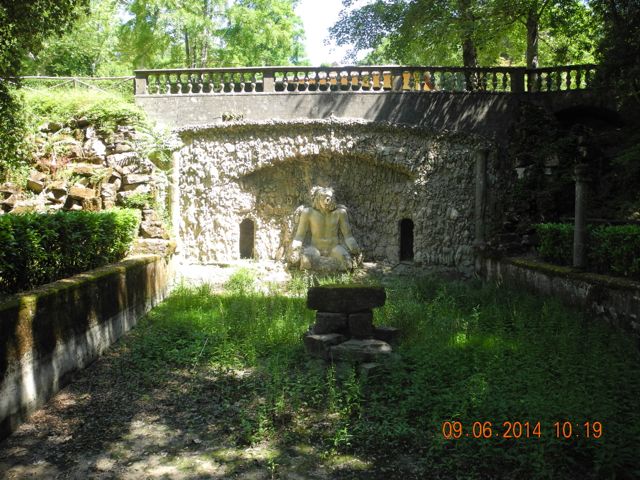
The Maschera Pond view from south
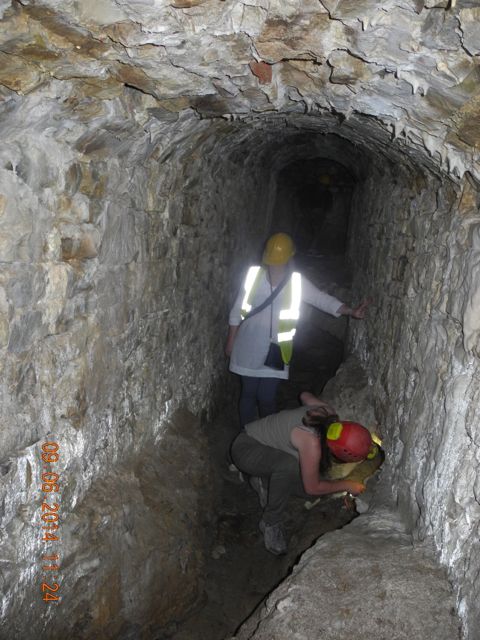
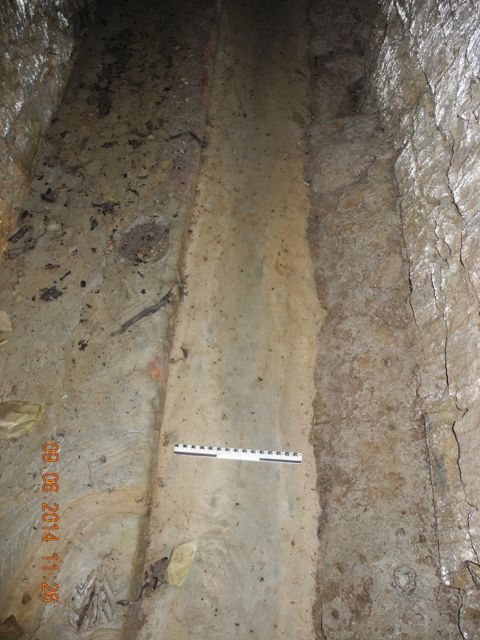
Exploring the channel that lead water down to the Mask . Detail of the former water course.

The Maschera Pond view from south


Exploring the channel that lead water down to the Mask . Detail of the former water course.
The next attraction was a
fountain/grotto complex which had originally been part of a terrace
just below the 16th. century villa - now demolished. This was known as
the Mugnone Grotto after the titulatory 'deity' of the small stream
which ran south from the park towards the River Arno. As well as being
able to measure and survey the outside of this feature we were also
lead behind the facade to explore the inner workings of the wonders
here which had included Pan up to something with the nymph Syringa and
a peasant/dragon interface.
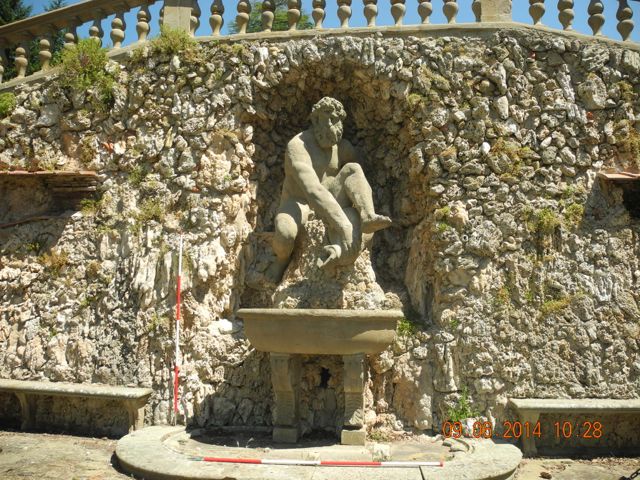
The Mugnone Fountain from the south
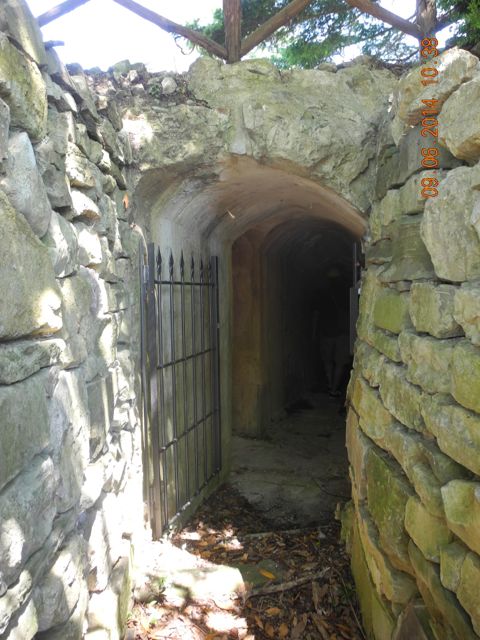
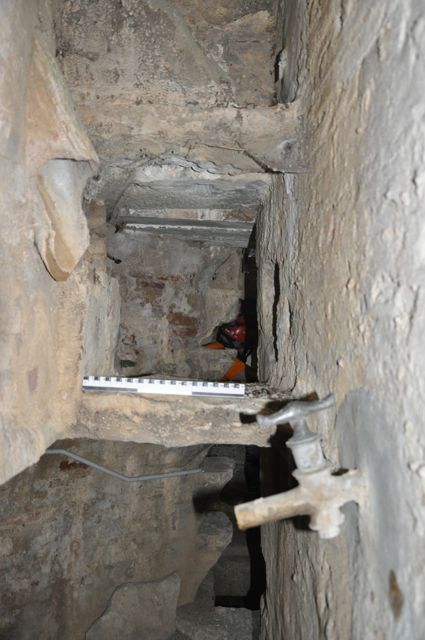
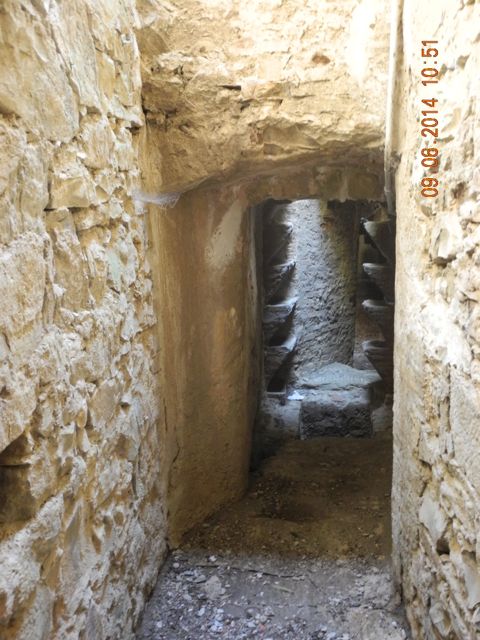
An entry to the underworld. Traps, taps and pipes. Another entry: climb down the jagged steps
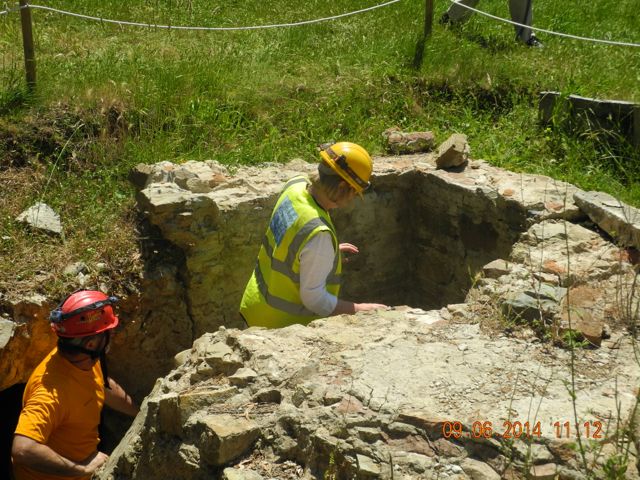
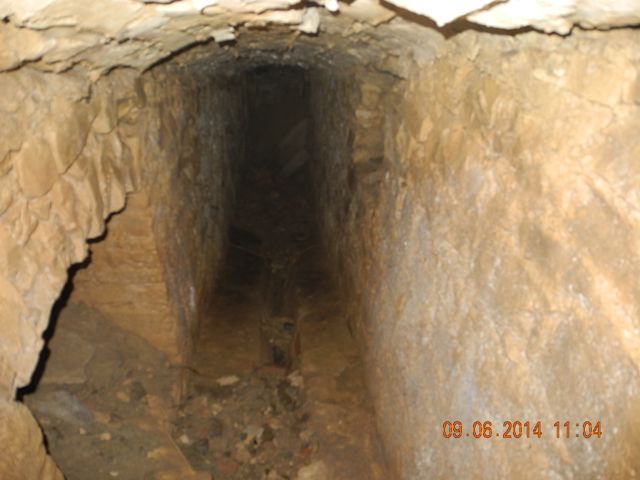
Verna begins the descent... into another conduit.
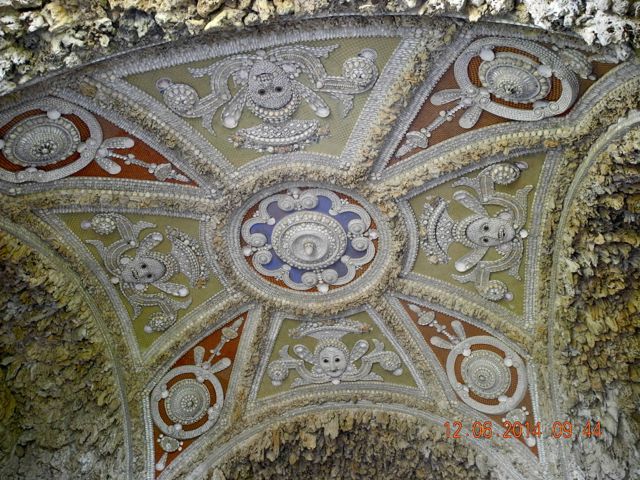
The ceiling of the grotto.
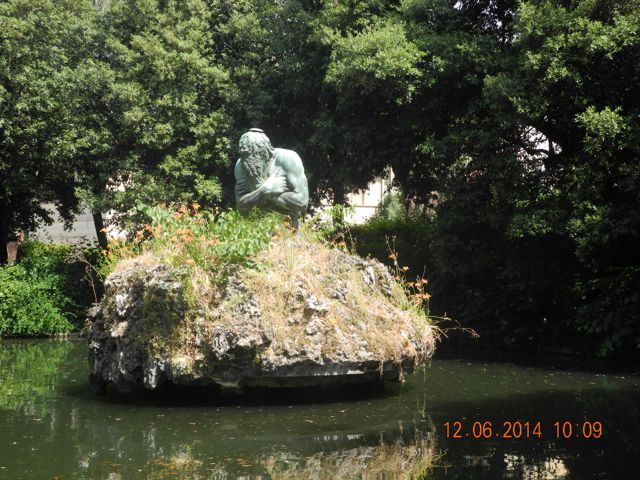
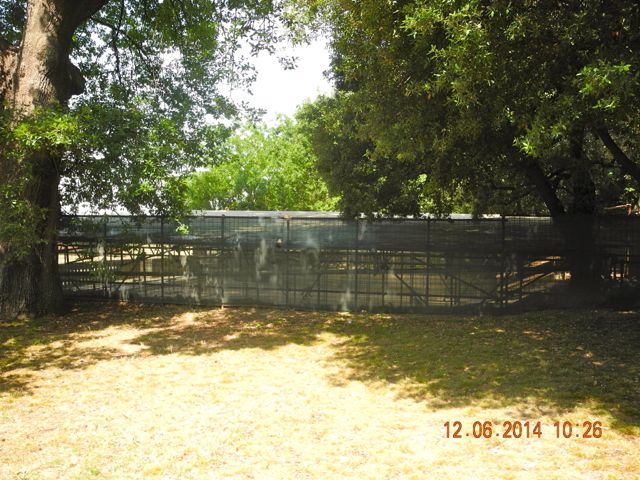
The Fountain of the Apennine by Ammannati from the south east. Scaffolding above the roof of the Grotto of the Animals.
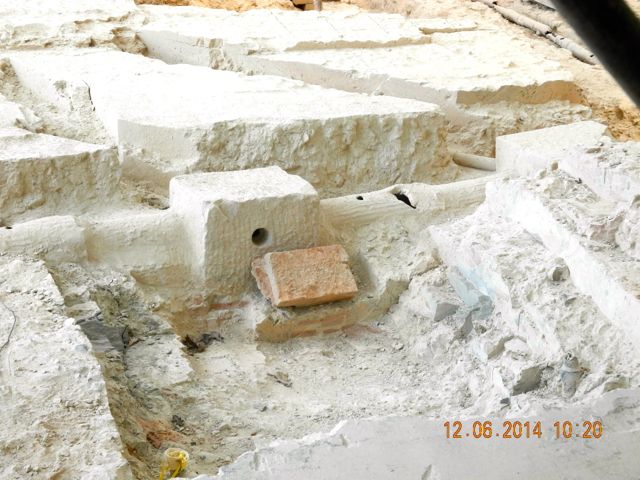
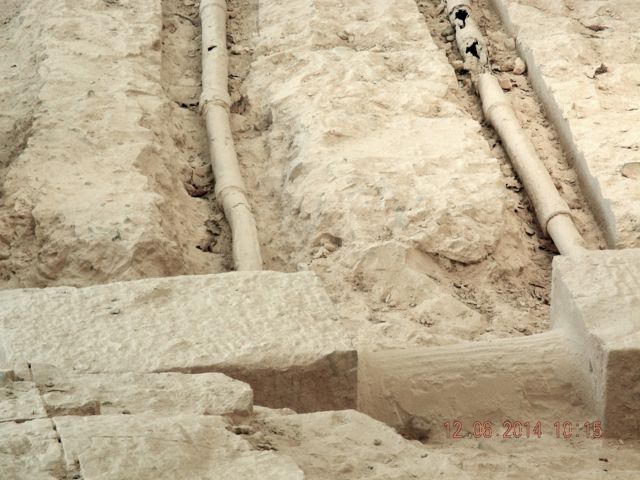
Details of plumbing arrangements to supply water to the Grotto of the Animals, views across excavated area looking west.
Not quite last on the list but deferred to our last day in Florence were the massive and majestic Boboli Gardens
attached to the Pitti Palace on the south bank of the Arno. Again we
had been unable to raise of contact with the staff here so went in as
paying customers. The garden here was developed in two main campaigns:
that part immediately behind the huge blocky palace belongs to the
middle part of the 16th. century while the huge extension to the
west belongs to the 1630s. 
The Mugnone Fountain from the south



An entry to the underworld. Traps, taps and pipes. Another entry: climb down the jagged steps
On the terrace above the fountain a
small excavation had been carried out on the site of the villa
revealing more evidence for water management and another entry to the
subterranean system of pipes and conduits.
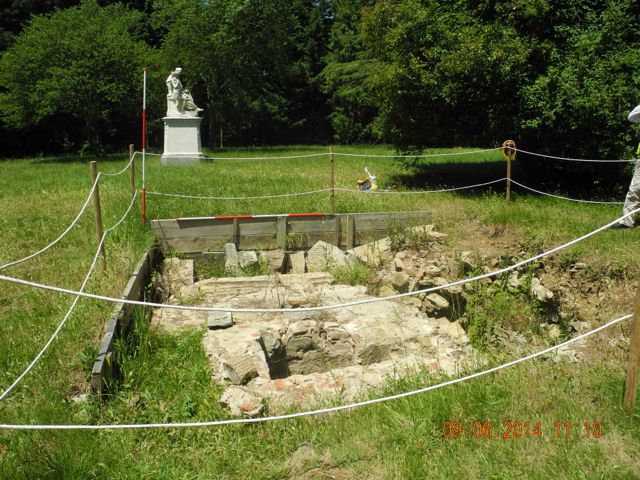
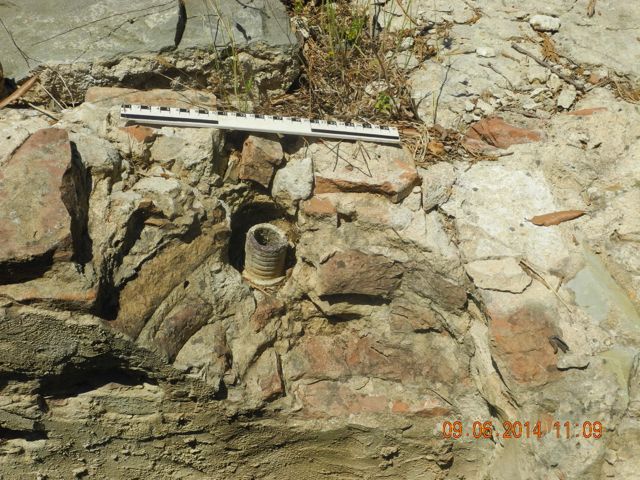
The excavated area from the east. A piece of threaded lead pipework.


The excavated area from the east. A piece of threaded lead pipework.


Verna begins the descent... into another conduit.
We had started at on of the lower
points in the water supply system and were now climbing the hill
to north of the original villa site so the next stop on our tour was
the magnificent Giant of the Apennines. This massive figure was
designed by Giambologna around 1580. The whole thing was under
restoration and again shrouded in scaffolding. This proved to be a
bonus for us as our hosts granted us access to the site so we were
literally able to climb all over him and explore his insides too.
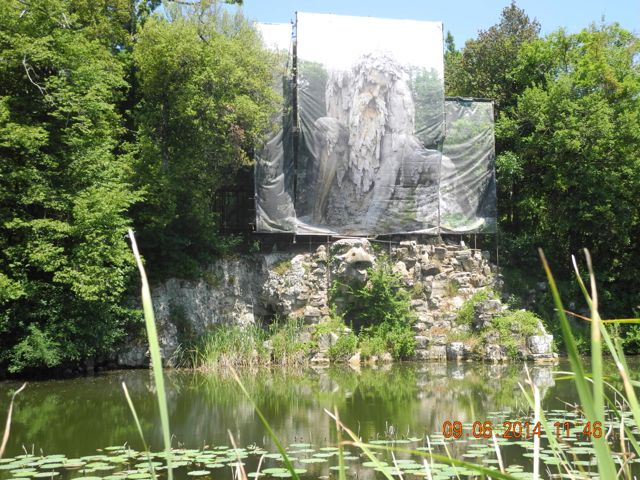
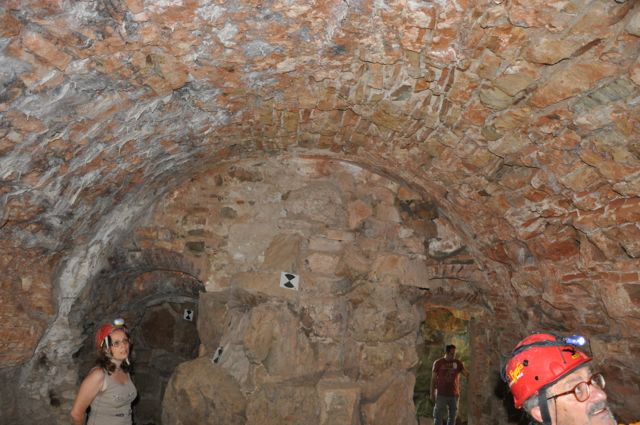
The giant cunningly depicted on the scaffolding that surrounds him. Underneath the giant, the roof of the lower grotto.
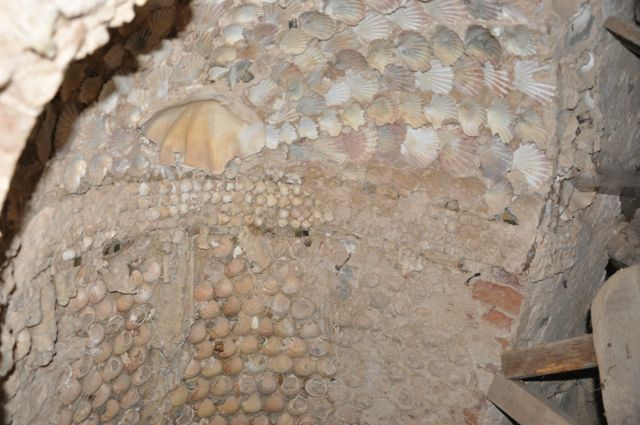
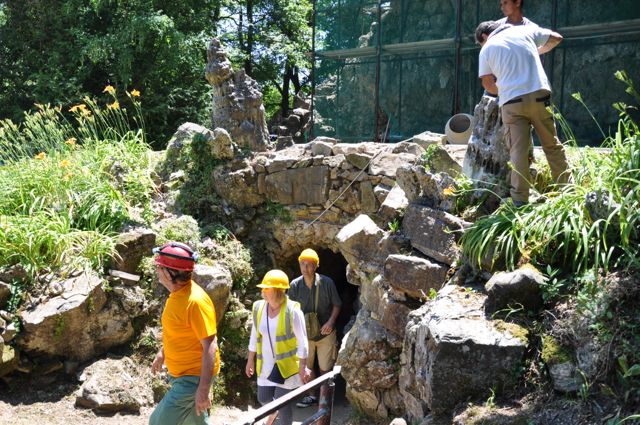
A small fragment of the decoration of the lower grotto. Emerging into the sunshine once again.
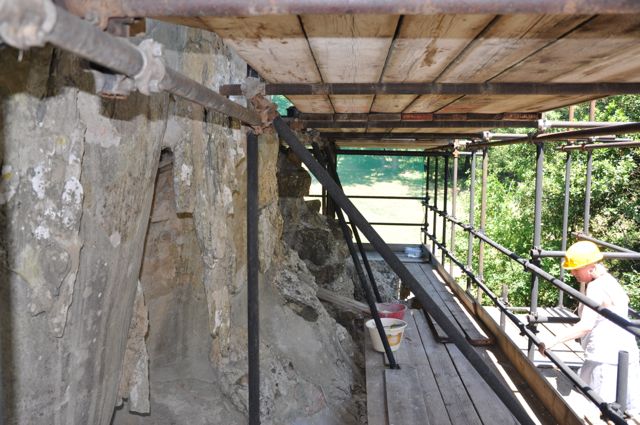
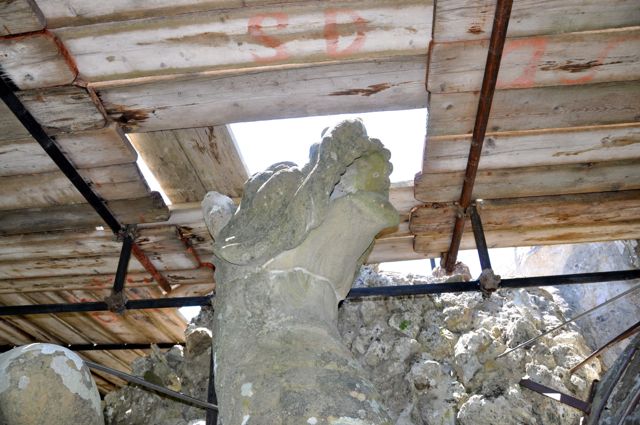
Up we go, climbing the scaffolding around the giant. The dragon on the giant's back used to breathe fire, we saw how it was done.
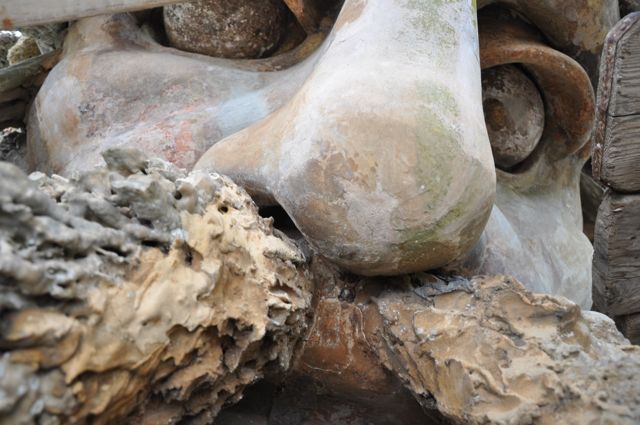
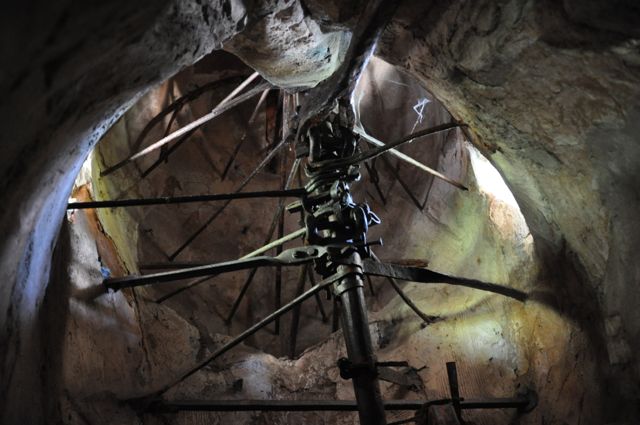
The face of the giant. The extraordinary armature inside the giant's head.
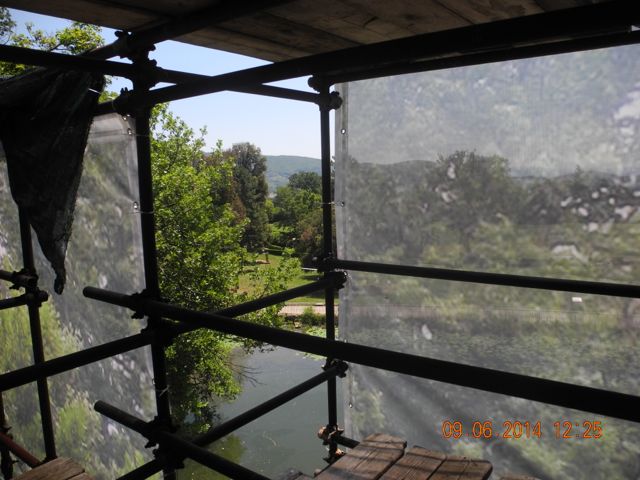
A giant's eye view, looking out across the Park Demidoff.
Having spent a lot of time hanging about outside villas it struck us as a good idea to look inside one and for that purpose we chose the home of Lorenzo the Magnificent at Poggio a Caiano, a building feted by architectural historians as one of the first purpose built country houses. it was built under the direction of Giuliano da Sangallo starting in 1485. The salone was described by Vasari as the most beautiful room in the world and what's more entry was free! Unfortunately the gardens were remodeled in the English style in the early nineteenth century so little of the original layout remains.
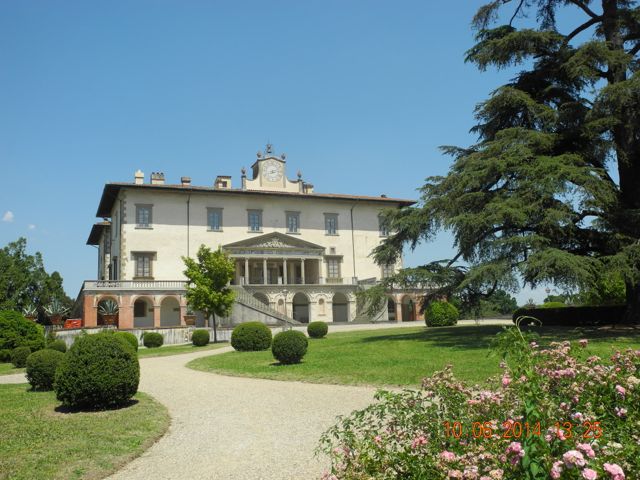
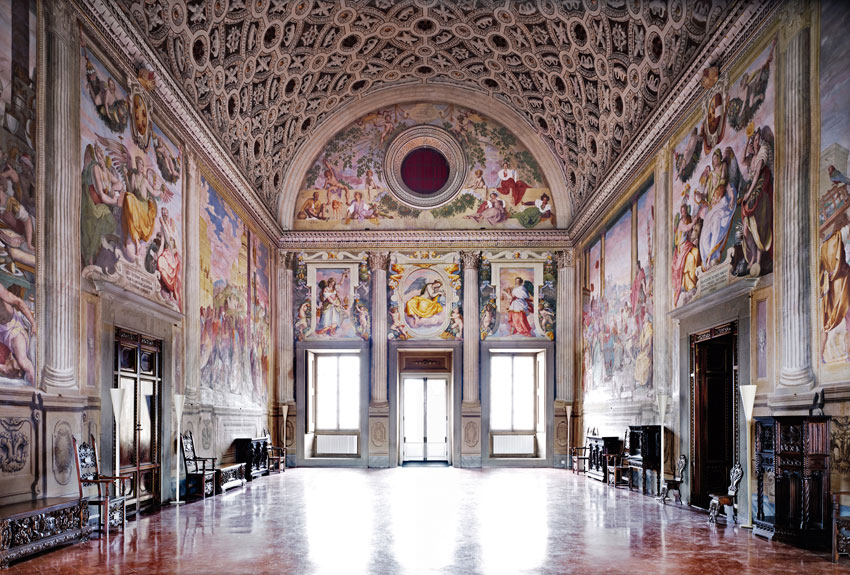
The villa from the south and 'the most beautiful room in the world'.


The giant cunningly depicted on the scaffolding that surrounds him. Underneath the giant, the roof of the lower grotto.


A small fragment of the decoration of the lower grotto. Emerging into the sunshine once again.


Up we go, climbing the scaffolding around the giant. The dragon on the giant's back used to breathe fire, we saw how it was done.


The face of the giant. The extraordinary armature inside the giant's head.

A giant's eye view, looking out across the Park Demidoff.
After that it was all up hill as we
traced the line of various underground water courses by lifting and
peering into a range of manhole covers. We finished off close to the
Fountain of Jove before pottering off to enjoy an excellent lunch with
our hosts at a venerable hostelry Zocchi's Ristorante.
Arguably this day alone made the entire expedition worthwhile and we
have to express our heartfelt thanks not only to Matteo and Paulo but
also to Dr. Giliberti, Professor Zangheri and Andrew Hornung form
Enstone who facilitated our visit.
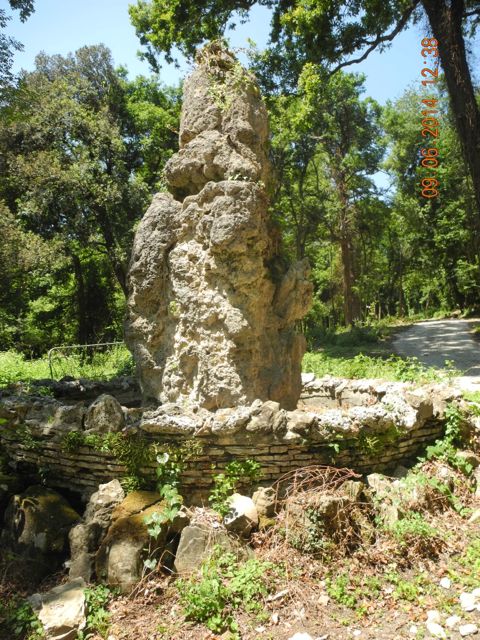
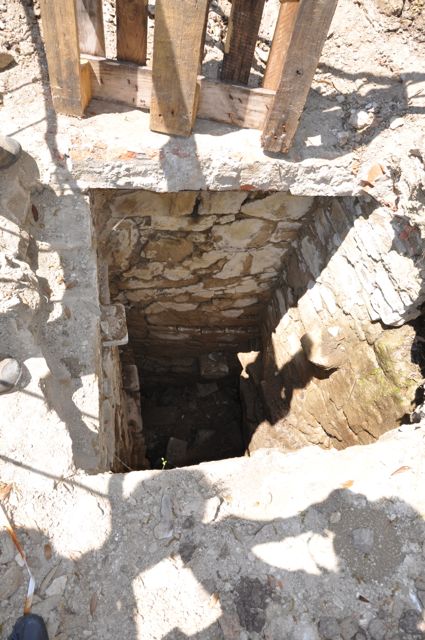
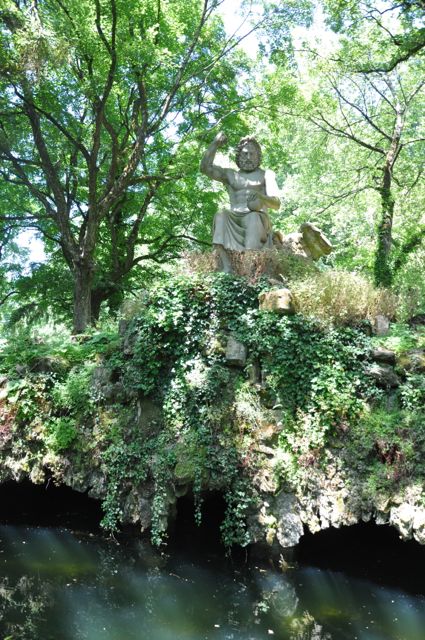
A column of spungi. Another entry to the water system, this one we didn't go down. The Fountain of Jove from the south.
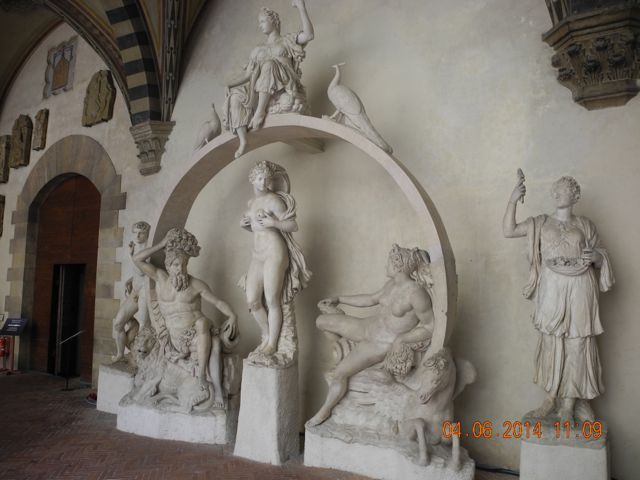
Of course Pratolino is a shadow of its former self so you have to travel to see the reassembled elements of the Fontana dell'Ammannati in the Bargello.
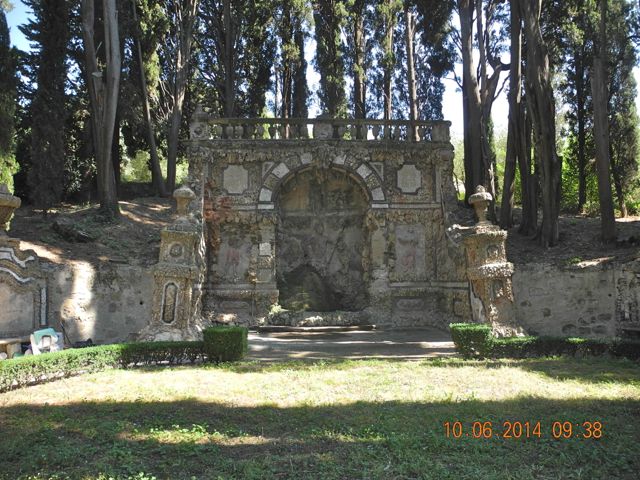
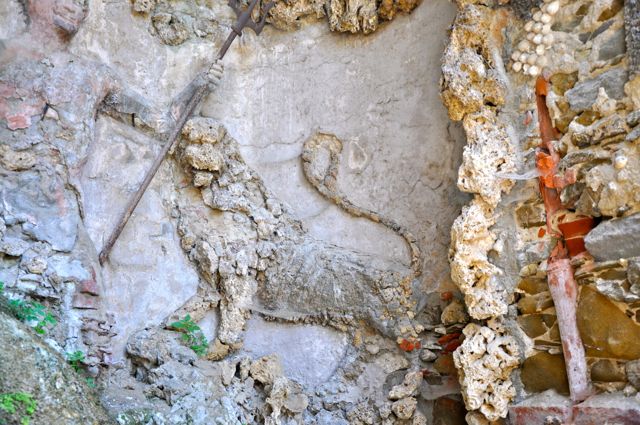
The Nymphaeum viewed from the bowling green to the south. Detail with eroded lion and exposed brick and pipe work.
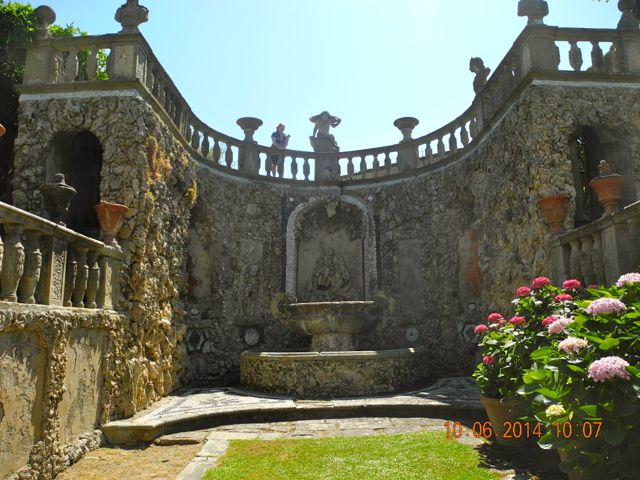
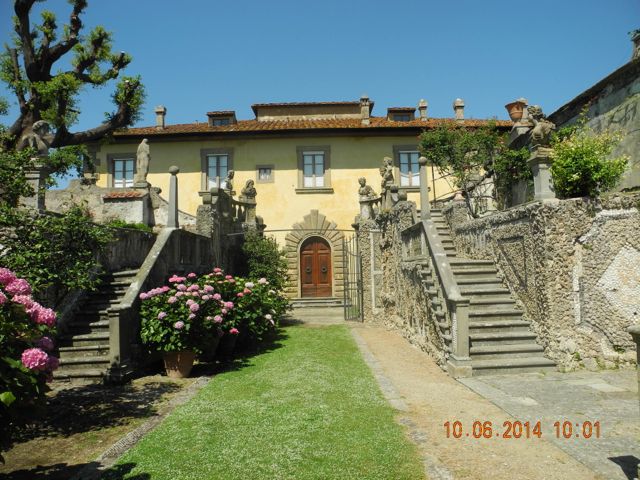
The Gabinetto di Roccaglia looking east and from the same location back towards the villa.
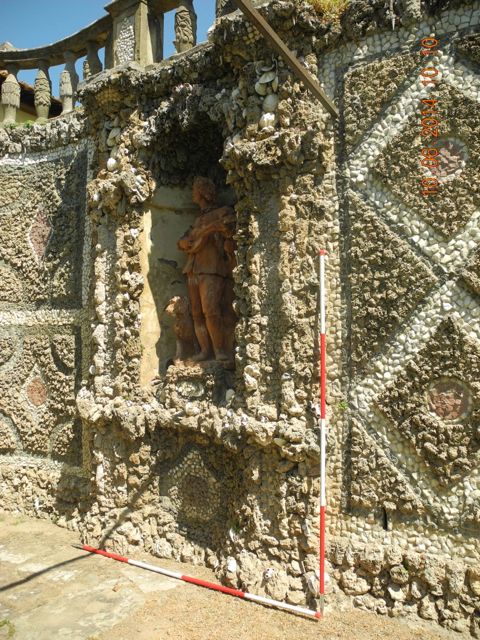
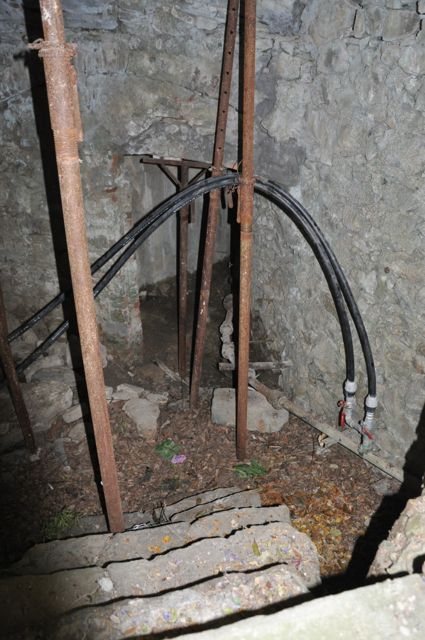
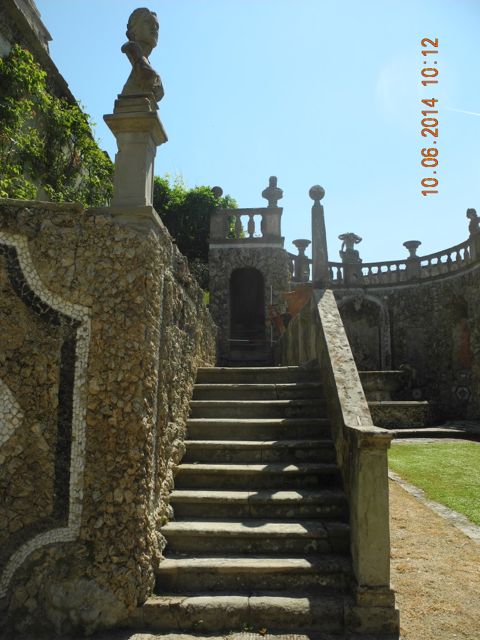
The gabinetto: niche with statue. Site of the former controls now evidently modernised. Stairs on the north side looking east.
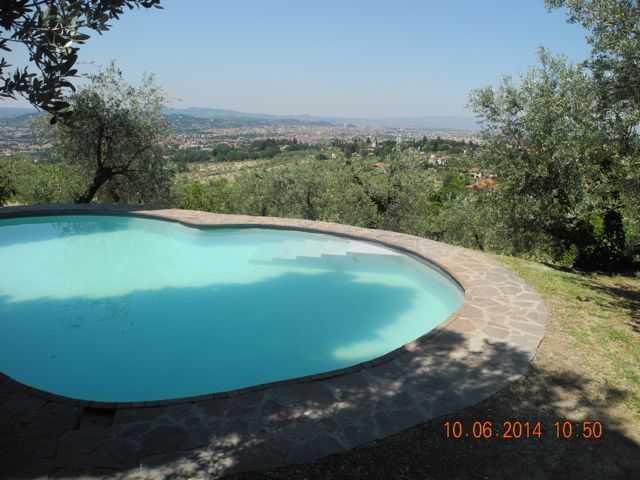



A column of spungi. Another entry to the water system, this one we didn't go down. The Fountain of Jove from the south.

Of course Pratolino is a shadow of its former self so you have to travel to see the reassembled elements of the Fontana dell'Ammannati in the Bargello.
Our explorations at Pratolino were
little troubled by the heat, partly because of the shaded woodland that
occupied much of the park and partly because we spent much of our time
underground. The unseasonable Florentine heatwave continued for the
rest of the week and certainly made our work on Tuesday June 10th. at
the Villa Gamberaia challenging at times.
Having obtained permission in advance to carry out survey work on
the
gardens we were slightly stunned to be charged 15 euros each for the
privilege. It really is a very beautiful garden, albeit on a small
scale with stunning views of Florence but still 15 euros... It was also
unfortunate that Nicola who was scheduled to show us around had had a
mechanical breakdown
of some kind and was unable to join us. Did I mention the drive up to
the villa? Several kilometres of narrow, I mean really narrow, up hill
lanes flanked by high, hard unforgiving walls with right angle bends
that needed a certain amount of shunting to get around and then to be
charged 15 euros, sorry, I'm going on a bit here. ( Update:
Thanks to the benefactor who was so moved/annoyed by my banging on
about the entry fee that he refunded me the 15 euros, now Peter can I
have a word about my council tax?) Anyway there were two
centres of interest for us, the nymphaeum at the north end of the
garden and grotto on the short east-west axis of the garden which we
believed still housed some of the original controls for the giochi d'acqua. The main work on the garden was done following its acquisition by Zanobi di Andrea Lapi in 1610.


The Nymphaeum viewed from the bowling green to the south. Detail with eroded lion and exposed brick and pipe work.


The Gabinetto di Roccaglia looking east and from the same location back towards the villa.



The gabinetto: niche with statue. Site of the former controls now evidently modernised. Stairs on the north side looking east.

Water still features in the modern
additions to the garden, surely a pool with one of the best outlooks in
the world? Yes that is Florence, that's a 15 euro view.
Having spent a lot of time hanging about outside villas it struck us as a good idea to look inside one and for that purpose we chose the home of Lorenzo the Magnificent at Poggio a Caiano, a building feted by architectural historians as one of the first purpose built country houses. it was built under the direction of Giuliano da Sangallo starting in 1485. The salone was described by Vasari as the most beautiful room in the world and what's more entry was free! Unfortunately the gardens were remodeled in the English style in the early nineteenth century so little of the original layout remains.


The villa from the south and 'the most beautiful room in the world'.
Thursday June 12th. had us taking
on two of the garden greats amongst the Florentine selection. the first
of these was the early Medicean garden at Castello a few kilometres north west of the city centre. Developed from 1537 onwards by Cosimo I it became something of a sculptural
showcase. We had tried without success to obtain authorisation from the
directorate to see behind the scenes here but luckily bumped into the
helpful and charming Francesca who introduced us to Paolo, the head
gardener who took some time out from his busy schedule to explain some
of the water features. A massive conservation project was underway on
the ground above the famous Grotto of the Animals where
excavations have revealed fascinating details of how water was supplied
to such a grotto. Work is not currently underway so we couldn't get on
to the site but there was plenty to see from the surrounding
scaffolding and we do have contact details for the project architect.
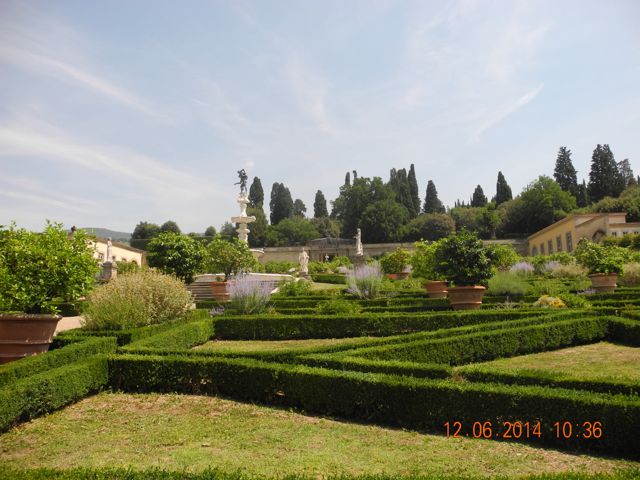
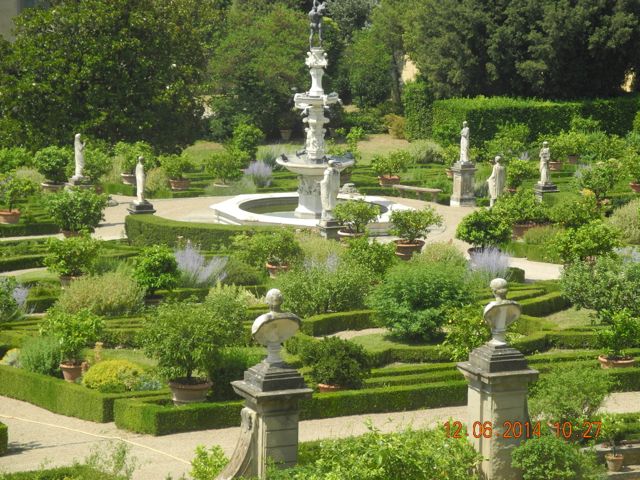
The formal gardens with Ammannati's Hercules Strangling Antaeus: view from south, view from terrace to north.
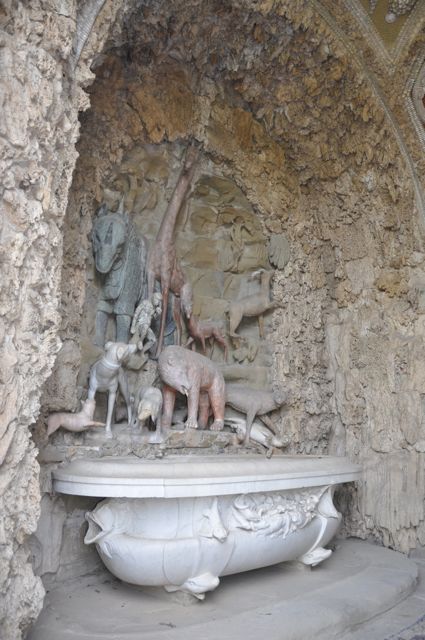
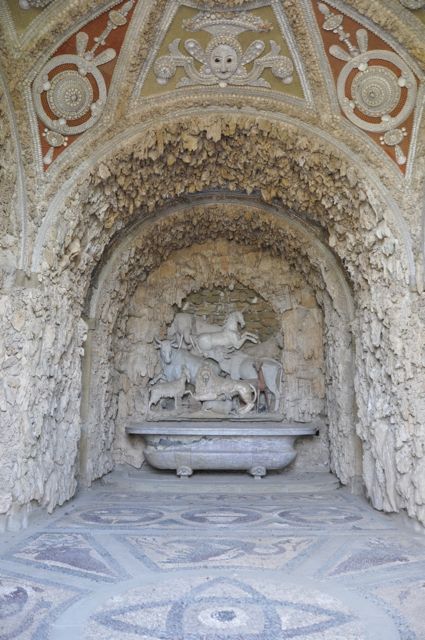
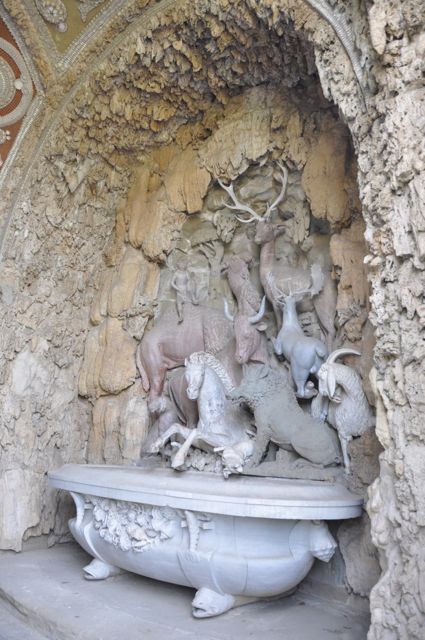
The utterly marvelous Grotto of the Animals with work by Tribolo, Vasari, Bachiacca, Ammannati and Giambologna!

The formal gardens with Ammannati's Hercules Strangling Antaeus: view from south, view from terrace to north.




The ceiling of the grotto.


The Fountain of the Apennine by Ammannati from the south east. Scaffolding above the roof of the Grotto of the Animals.


Details of plumbing arrangements to supply water to the Grotto of the Animals, views across excavated area looking west.

The amphitheatre is the first striking feature that appears as you emerge up from the ramp from the palace courtyard, a feature which links in with a long tradition of theatrical spaces in gardens that we examined during the work on Farnborough. As the main grotto was only opened for a few minutes on the hour we took a turn to the left and headed down to Buontalenti's Great Grotto taking in the rather grotesque statue of the dwarf Morgante riding on a turtle, what is it with turtles?

Known locally as Bacchus this is in fact a likeness of the favourite dwarf of Cosimo I, view from south west, the Grand Grotto is in the background..
The Grand Grotto is a truly
beautiful piece of
work adapted from a plant nursery designed by Vasari and modified in the
1580s by Buontalenti. It features a bagpiper so I was sold on it right
away but it's worth pointing out that it also
contains casts of Michelangelo's Prisoners (now in rather poorly
finished white concrete), Vincenzo de Rossi's Theseus and Helen of 1587 and Giambolgna's Venus of 1573 as well as a host of other decorative effects of varying degrees of allegorical and symbolic significance. I bought a copy of Costanza Riva's La Grotta Grande de Boboli: Laboratoriodi Meraviglie, to get to grips with all this, however, as it is in Italian this could take some time.

Waiting for opening time at the grand grotto, view from the south west.
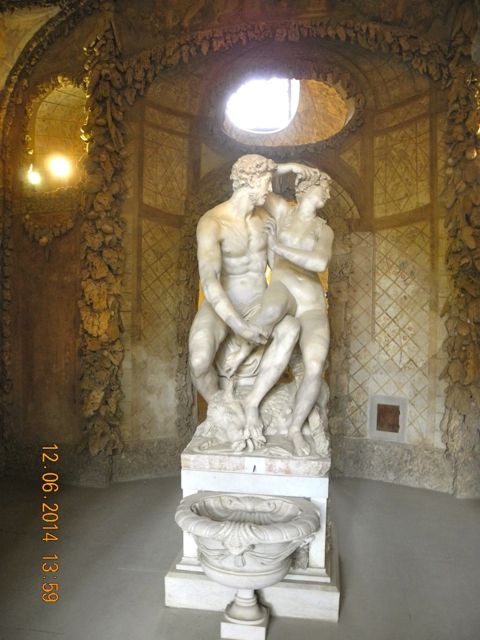
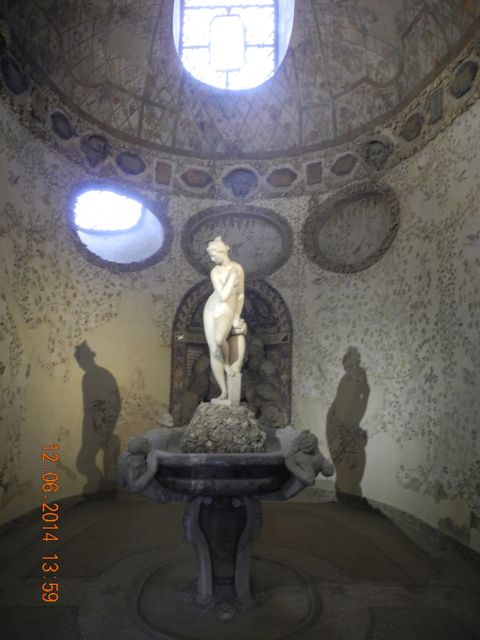
Theseus, Helen and Venus.
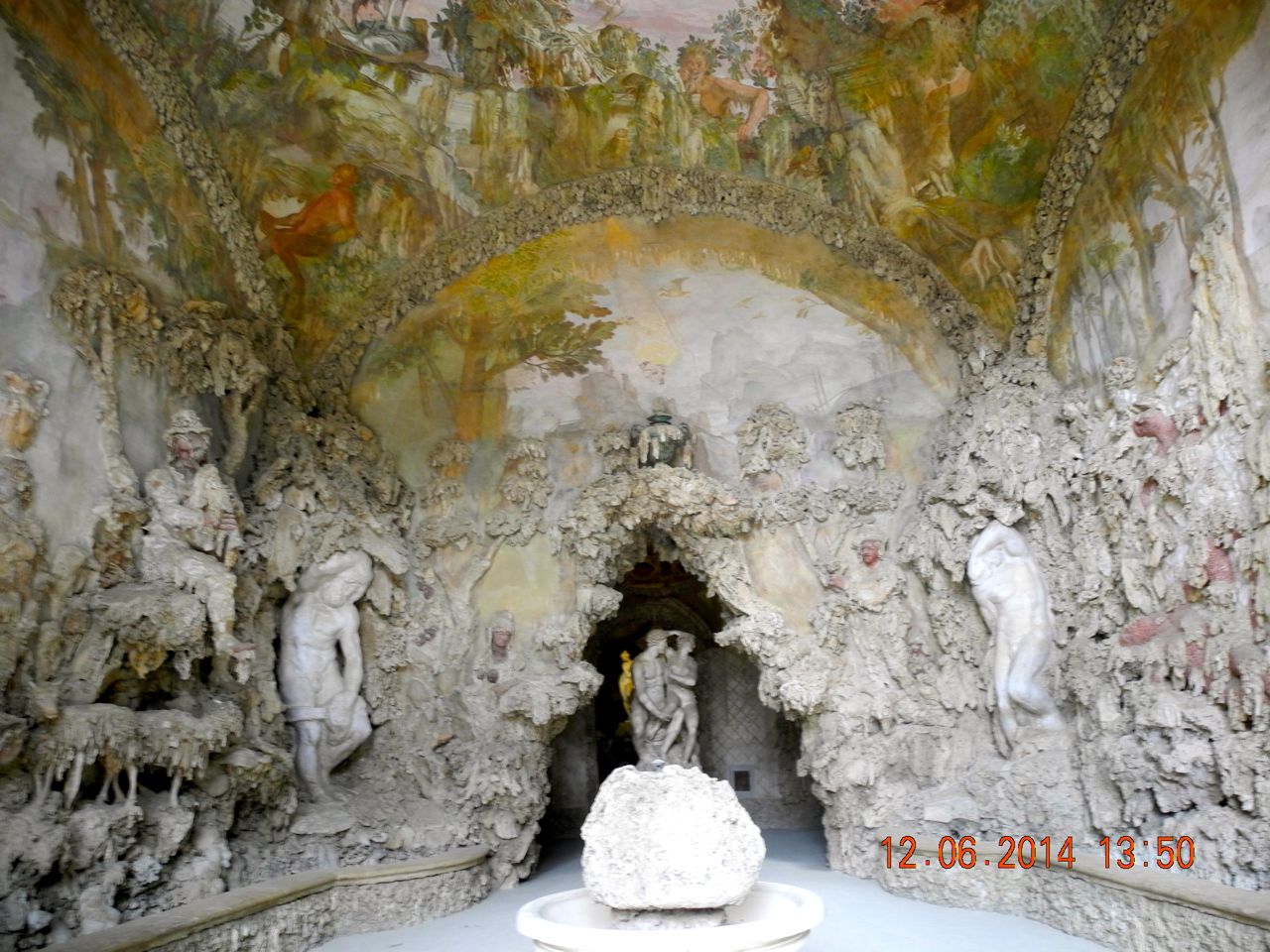
The big picture, the Grand Grotto viewed from the entrance.

Waiting for opening time at the grand grotto, view from the south west.


Theseus, Helen and Venus.

The big picture, the Grand Grotto viewed from the entrance.


An open stone lined channel approaching the Grand Grotto from the south east then carried into it on a small aqueduct, view from the south west.
Poking about in the
vicinity lead us to contemplate a possible source of the copious
amounts of water that must have once flowed through the grotto and
following that up stream lead us to a smaller earlier grotto
termed Grotticina di Madama.
This was completed in in 1555 by Davide Fortini and the suggestion in
Medri and Galletti's brief guide to the garden is that this was the
precursor to all later Tuscan constructions of this type.
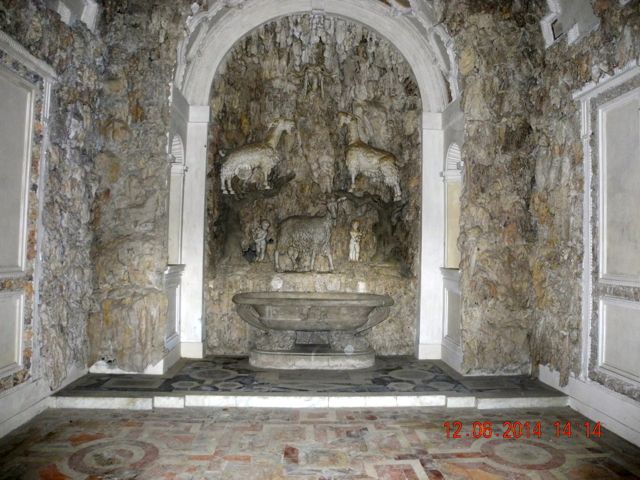
The interior of the Grotto of Madam, I'm not sure of the translation here but it certainly bears a strong resemblance to the grotto at Castelli, I shall have to get the chronology of all this sorted out.

The interior of the Grotto of Madam, I'm not sure of the translation here but it certainly bears a strong resemblance to the grotto at Castelli, I shall have to get the chronology of all this sorted out.
By now there was more than a hint
of thunder rumbling about and by the time we had climbed the slope
above the amphitheatre to view Soldo Lorenzi's bronze Neptune of 1568
perched, along with ducks and heron, in the Falcone Basin it was
raining hard. We initially look shelter against some
bushes but such was the strength of the downpour that we eventually had to take cover
in the public toilets along with other similarly half drowned visitors,
it all turned quite convivial in the end and after about half an hour
the rain stopped.
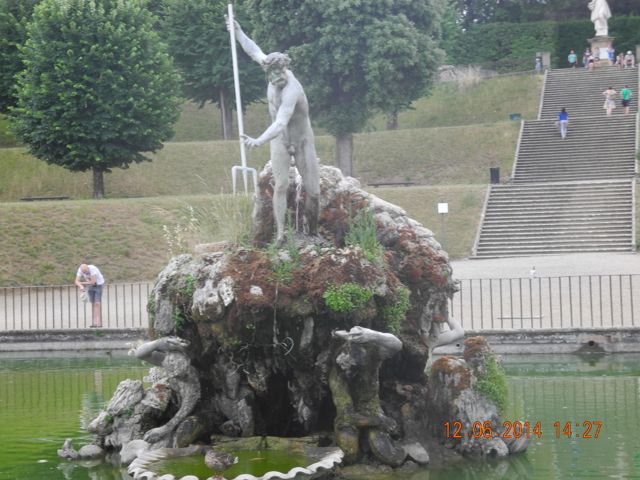
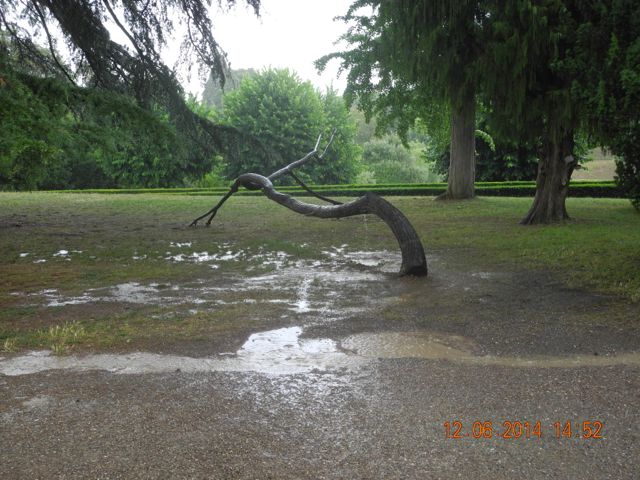
Neptune and his ducks are about to get a lot wetter, view from west. Boboli in the rain, the view from the toilets, we got to know this well.
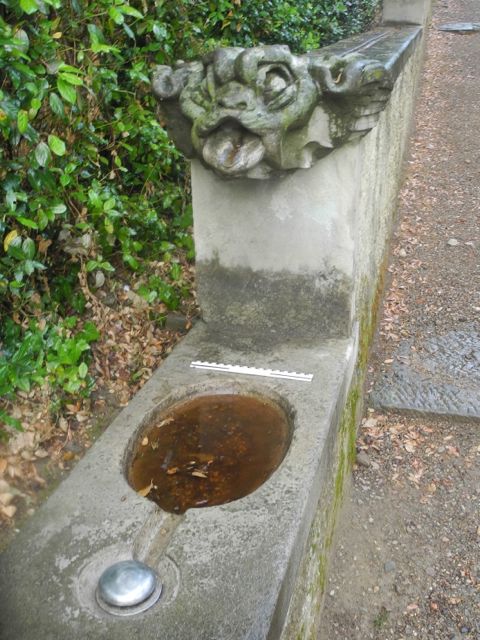
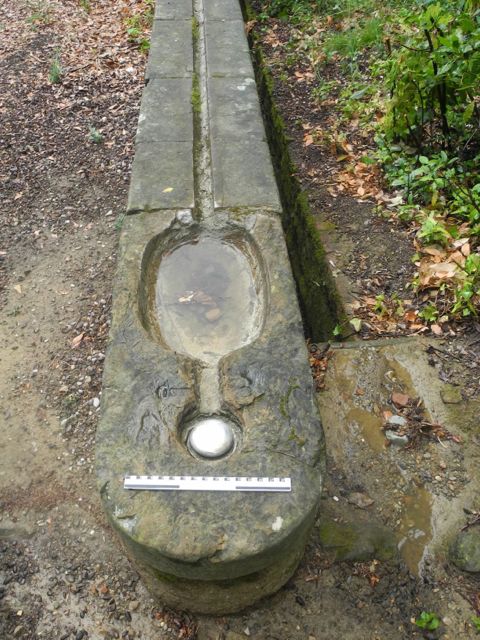
The Fountain of the Mostaccini: upper section looking north east, lower section looking west.
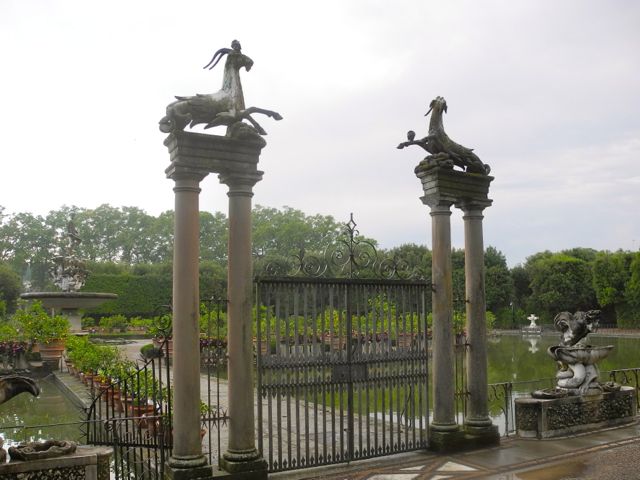
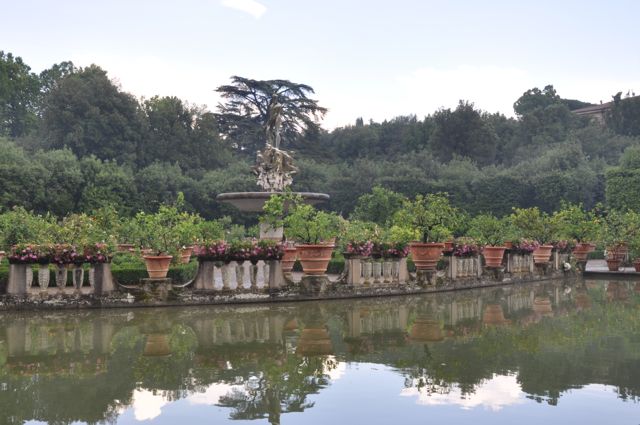
The approach to the Isola from the north east. General view from the west, note no Perseus.
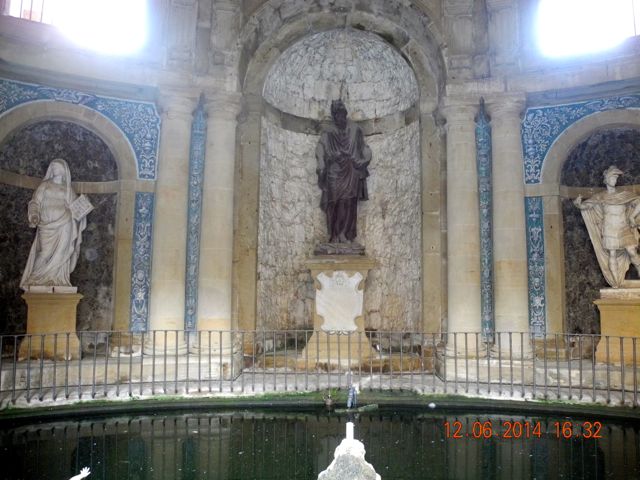
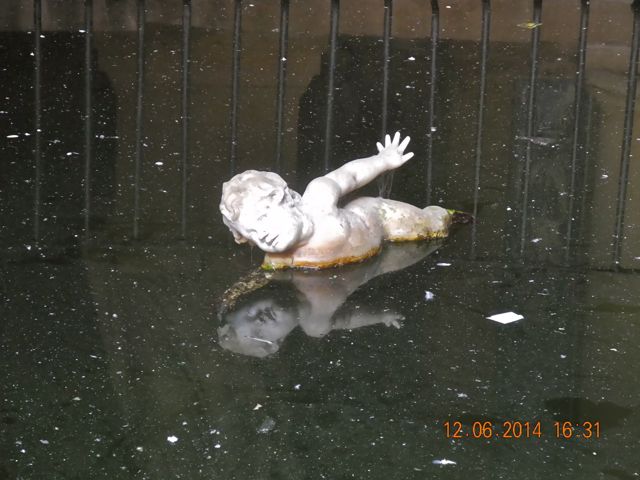
On the way out we caught one more grotto, this one known as the Grotto of Moses which features some rather disturbing swimming cherubs... or are they drowning?
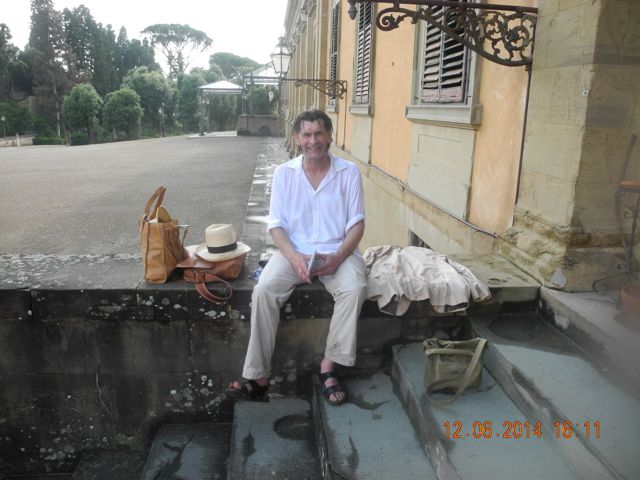
Drying out on the steps of the Costume Museum, the hat will never be the same again.
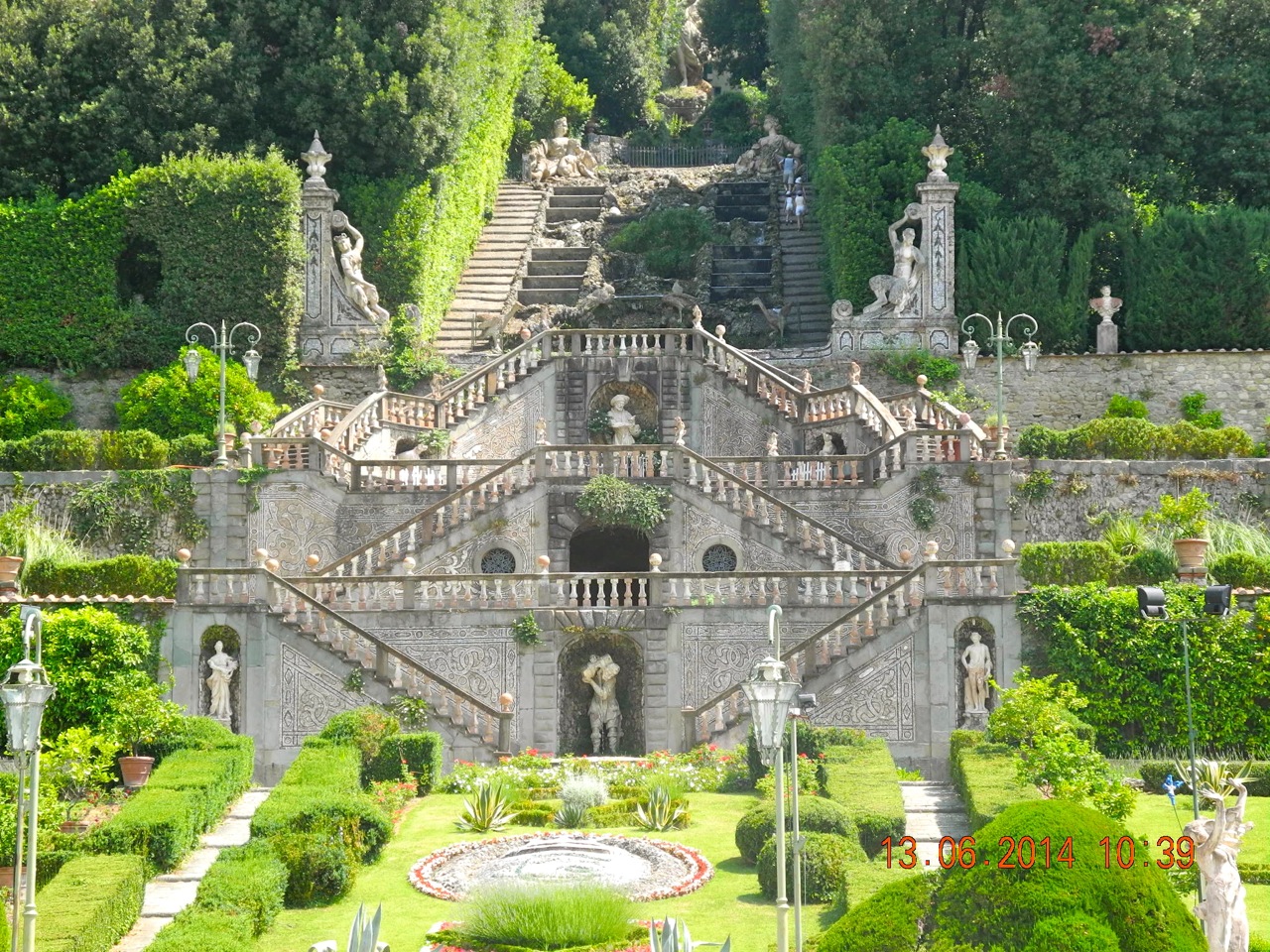
The view, the grand staircase and the great water chain, view from south west.
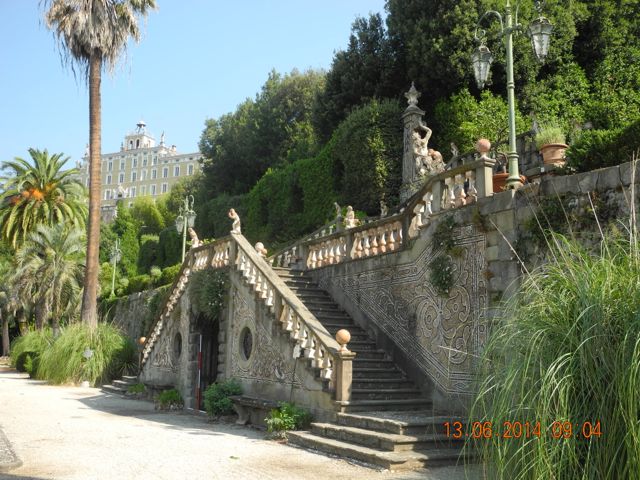
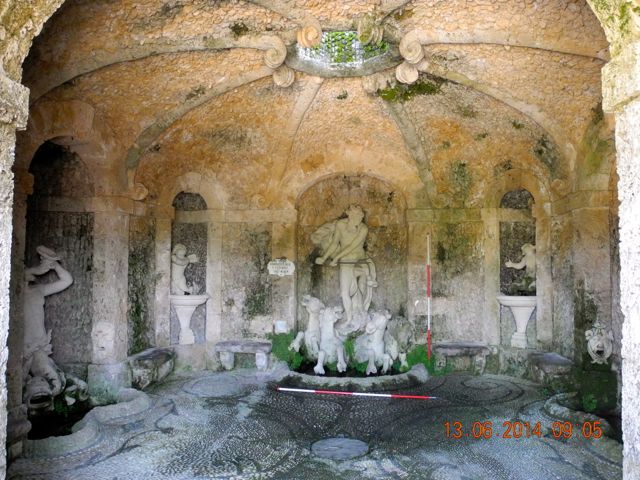
The second terrace with the entry to the Grotto of Neptune with the Villa Garzoni in the background, looking north and inside the grotto.
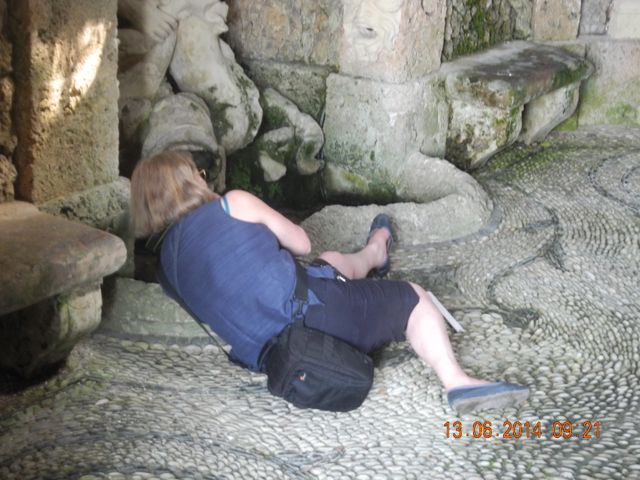
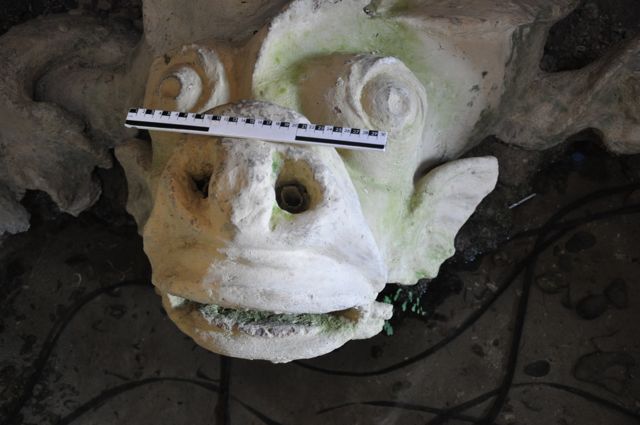
Verna went to huge lengths to get just the right angle on the close ups and here's an example, note the potential to squirt water from the nostrils.
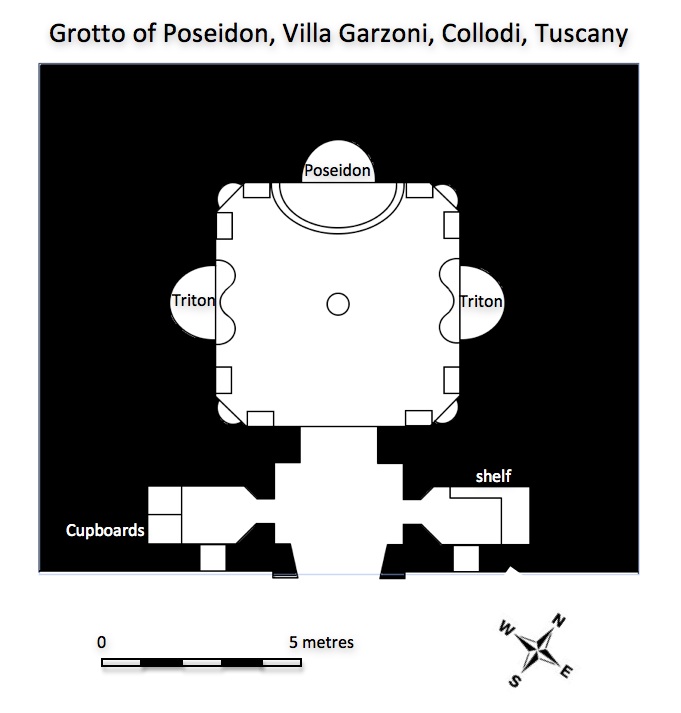
Our completed plan.
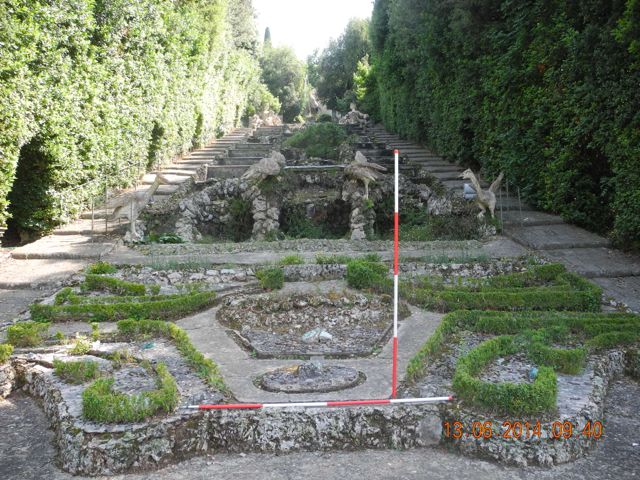
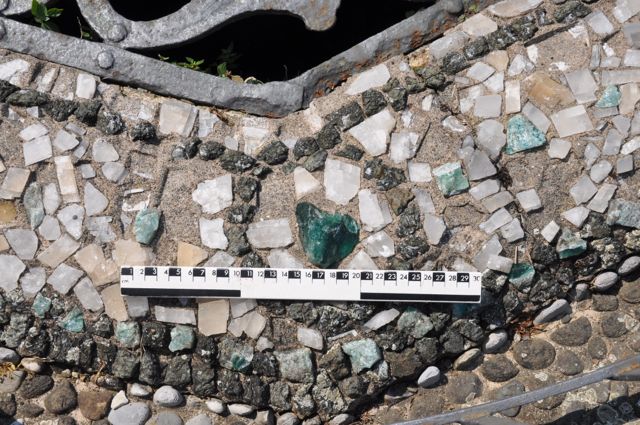
The start of the water chain looking north east with details of the decoration including coloured glass.
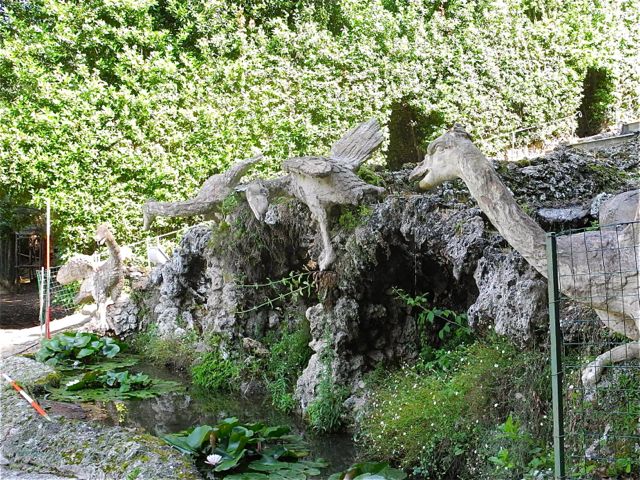
I'm not sure exactly what kinds of birds these are supposed to be.... suggestions?
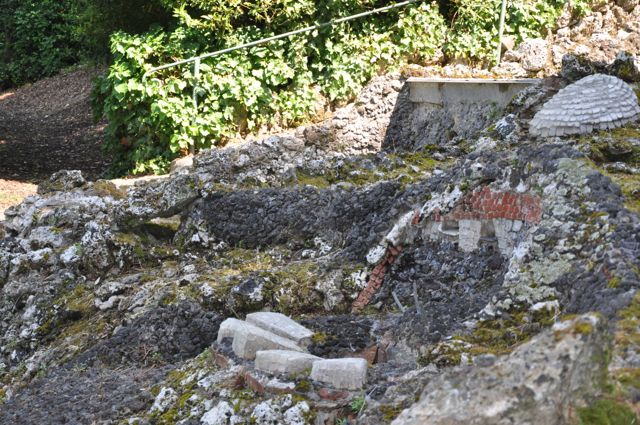
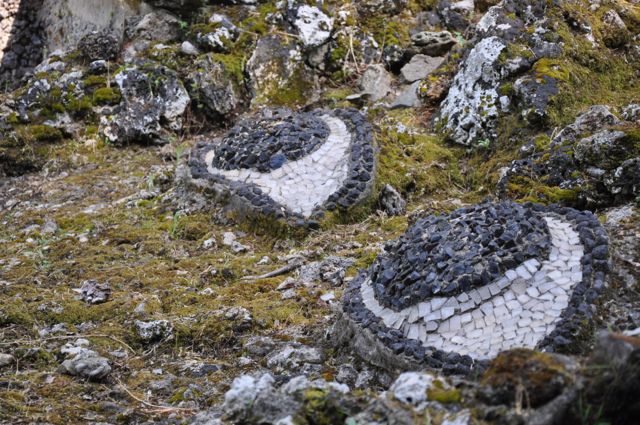
the anamorphic giant: his mouth with brick like teeth covered in quartz and his big bulgy eyes, both views from the south east.
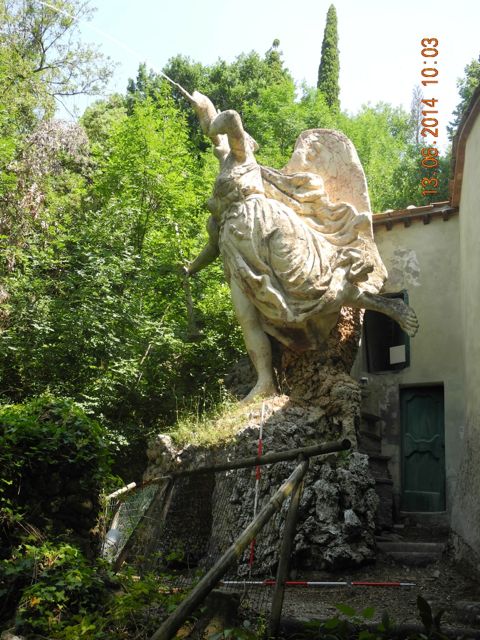
Fame spouting forth, view from south east, the building to the right is a former bath house.
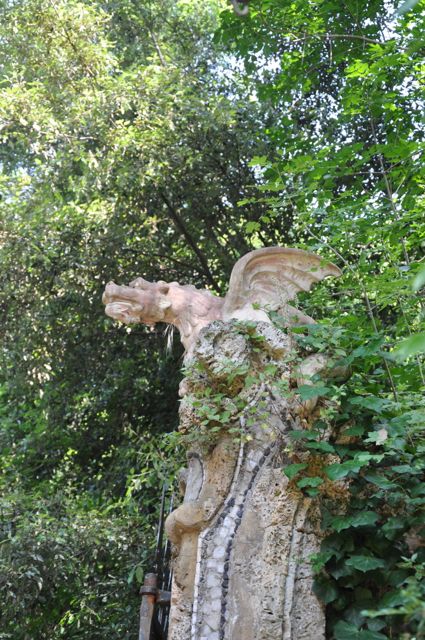
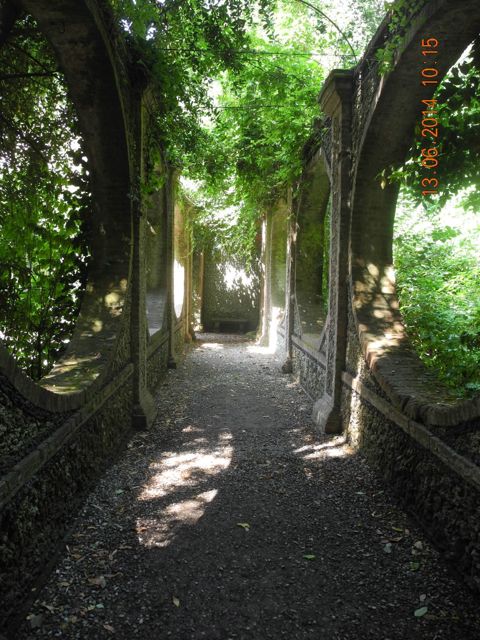
On into the rest of the park, a dragon capped gate pier and the beautiful Ponte sul Rio which gives a view down into an early example of a labyrinth.
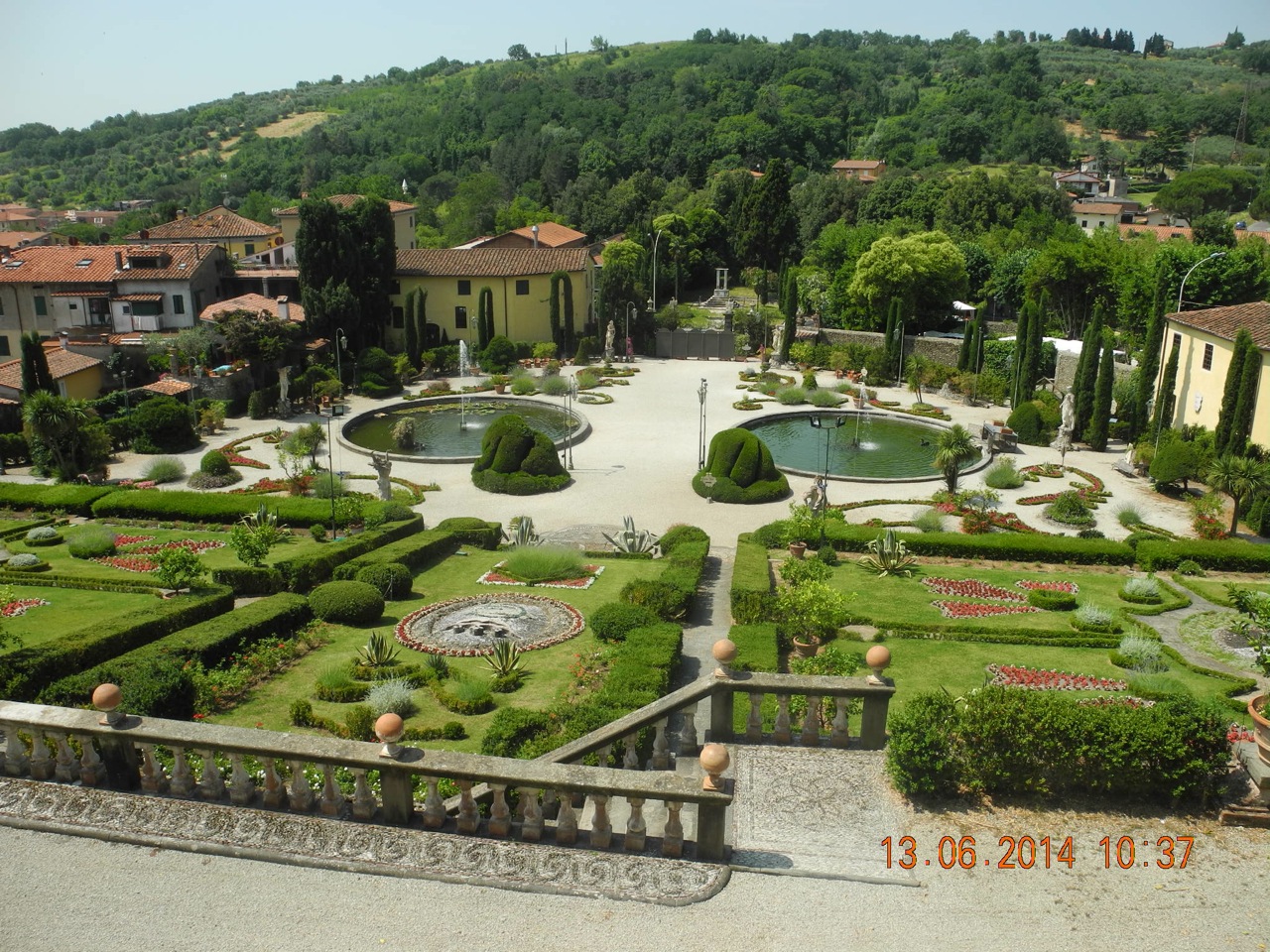
The end of the visit, looking down to the south west on to the parterres at the foot of the terracing.


Neptune and his ducks are about to get a lot wetter, view from west. Boboli in the rain, the view from the toilets, we got to know this well.
Once the rain stopped we resumed our explorations and a few turns and a twisty path or two took us to the Ragnaia della Pace
an area originally set aside for netting birds. In order to attract
their feathered friends a series of drinking troughs were provided
today known as the Fountain of the Mostaccini presumably a comment of the grotesque faces which adorn the upper section of this feature.


The Fountain of the Mostaccini: upper section looking north east, lower section looking west.
The final major feature on our itinerary was the famous Island Pool (Vasca dell'Isola).
As it happened pools plus islands had not been major feature of the
gardens we had studied up to this point but given our interest in
Hanwell's House of Diversion we were certainly on the look out for
them. This was a huge example and was approached via a causeway flanked
by columns with 18th. century capricorns another Medici family symbol.
At the centre was Giambologna's Ocean Fountain of 1576 relocated here
from the Amphitheatre in 1636. Unfortunately the gates were locked and
we could only observe the island from a distance. Oddly the well known
semi-submerged statue of Perseus on horseback seemed to have
disappeared, presumably removed for restoration. I'm not
sure we learned anything of great value here except to note that
the surface of the island is only standing a short distance above
the level of the water


The approach to the Isola from the north east. General view from the west, note no Perseus.


On the way out we caught one more grotto, this one known as the Grotto of Moses which features some rather disturbing swimming cherubs... or are they drowning?

Drying out on the steps of the Costume Museum, the hat will never be the same again.
Our final Tuscan garden was nailed
on the last Friday, June 13th. and proved in many ways to be the most
rewarding. this was the garden of the Villa Garzoni
in the village of Collodi, just round the corner from where we were
staying. We had obtained permission in advance to undertake survey
work and photography and so were a little disconcerted at having to
ring the bell fairly frequently over a period of around quarter of an
hour before one of the gardeners appeared to let us in. the gardens
were laid out by Romano Garzoni in the first half of the 17th. century
however most of the visible remains date from further improvements
during the following century. The garden has a little of everything and
makes full use of the copious supplies of water from the hills to the
north and the 45 metre drop on the main south west facing slope.

The view, the grand staircase and the great water chain, view from south west.
I was particularly keen to see the
way the terracing and steps were treated as a possible parallel for
what we are hoping to find on the great east terrace at Hanwell. In the
middle of the second terrace was the rather fine Grotto of
Neptune. It
was intriguing to see the variety of decorative materials used in this
instance including large chunks of a greenish glass. Beyond the third
terrace with its flanking statues of a male and female satyr and a
lively troop of terracotta monkeys is the water chain. This is
prefigured by a small grotto with some rather ungainly birds presiding
over it. the chain is in three parts and central decorative strip
flanked by two parallel sets of giant stairs down which the water
flows. A growth of papyrus rather conceals one of the central features
which is a huge mask or face heavily stretched on anamorphic principles
so as to appear normally proportioned if seen from the parterres below.
Surmounting all this is a final pool into which an enormous statue of
Fame discharges water.


The second terrace with the entry to the Grotto of Neptune with the Villa Garzoni in the background, looking north and inside the grotto.


Verna went to huge lengths to get just the right angle on the close ups and here's an example, note the potential to squirt water from the nostrils.

Our completed plan.


The start of the water chain looking north east with details of the decoration including coloured glass.

I'm not sure exactly what kinds of birds these are supposed to be.... suggestions?


the anamorphic giant: his mouth with brick like teeth covered in quartz and his big bulgy eyes, both views from the south east.

Fame spouting forth, view from south east, the building to the right is a former bath house.


On into the rest of the park, a dragon capped gate pier and the beautiful Ponte sul Rio which gives a view down into an early example of a labyrinth.

The end of the visit, looking down to the south west on to the parterres at the foot of the terracing.
The gardens at the Villa Garzoni would perhaps more than any other of the sites we visited repay additional study as there seems a good chance that the early arrangements for delivering and managing the water supply remain substantially intact, however, it was our last day so we saw what we could then packed up.
It is a fact not without irony that to visit some of the most attractive places in Italy you have to travel through some of the most unattractive... and busiest. The Arno valley between Florence and Lucca has to be one of the most heavily developed regions in the country. Just as earlier populations were attracted by the area's resources today the potent combination of tourism and market gardening has created an odd kind of urban sprawl taking in the towns of Prato and Pistoia. This transformation of the surrounding countryside makes it quite difficult in some cases to read the gardens as they would have stood in their original settings. Indeed it is with a feeling of some gratitude and relief that we were able to insist that 'no we're really only here for the plumbing'. The thought of having to get to grips with all that symbolism of hidden meanings and esoteric knowledge just gives me a headache. What we have come away with is an extraordinary archive of detailed photographs of the fine details of how these extraordinary places were put together. Our confident expectation is that knowing at least something about the nuts and bolts of Renaissance plumbing will help us with kind of fragmentary evidence we are likely to be unearthing at Enstone and Hanwell.
And finally... a very special thank you to Edwina, Nigel and Verna, who shared driving, photographing, surveying, shopping, cooking and other duties to make the expedition such a success.

View across the Arno valley towards Florence, looking south west from the Villa Gamberaia.

The Enstone Historical Society enjoy their picnic after touring the grounds.
The situation at Enstone was even more dire when we eventually arrived there and again special thanks to Robin for helping tame the wilderness. The grassy lawns of early spring have now grown up to almost head height. I used the Jimny to blaze a trail, or a least somewhere to walk, down to the the site of the lower excavation and it was an extraordinary experience, I really couldn't see where I was going. On the terrace dig a remarkable carpet of small pink flowered Convolvulus arvensis (field bindweed) had established itself, needless to say it was mercilessly extinguished.


The fruit of Robin's labours.


My bit, before and after.
Back at Hanwell our thoughts began to turn towards preparing for the big dig in August and in particular the huge section through the East Terrace. The ground had to be cleared and the trench laid out which meant advancing into the undergrowth with machete in hand (Thanks to Christopher for the judicious application of a little weed killer which went some way to opening things up for us). before putting sweating hordes to work on the trench we needed to have some sort of idea what to expect so we began a couple of test areas in order to get a sneak preview

Peter takes on the Butterbur (Petasides hybridus).


Work begins on two test areas on the East Terrace: looking downhill to the east and uphill to the west.... nothing yet.